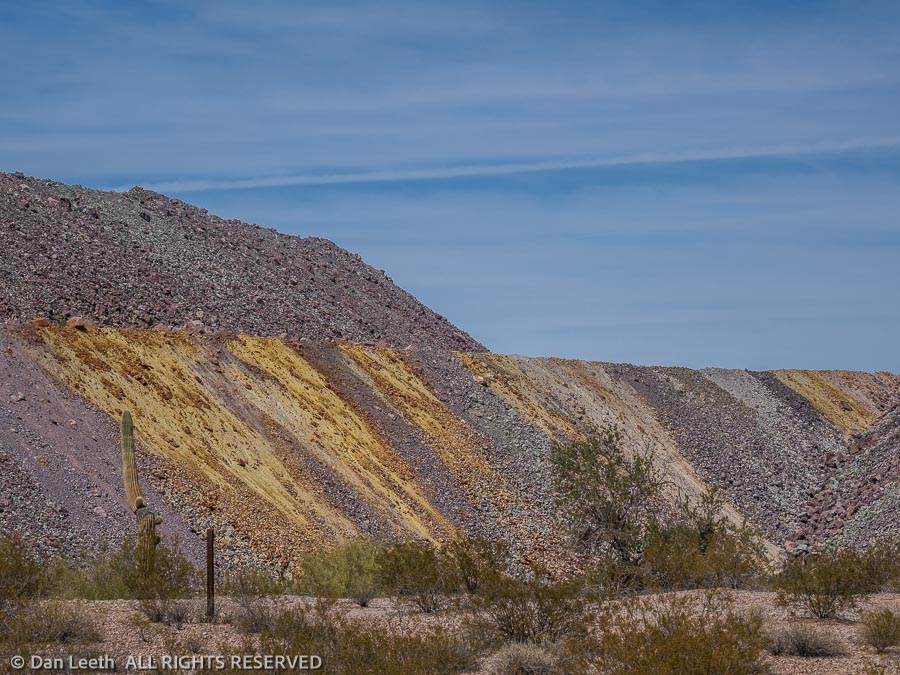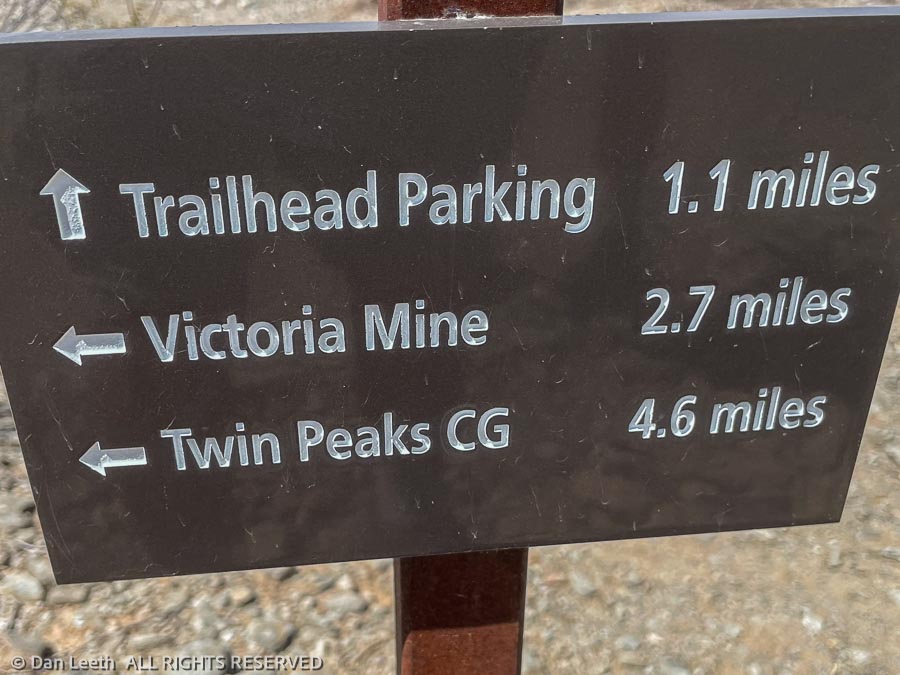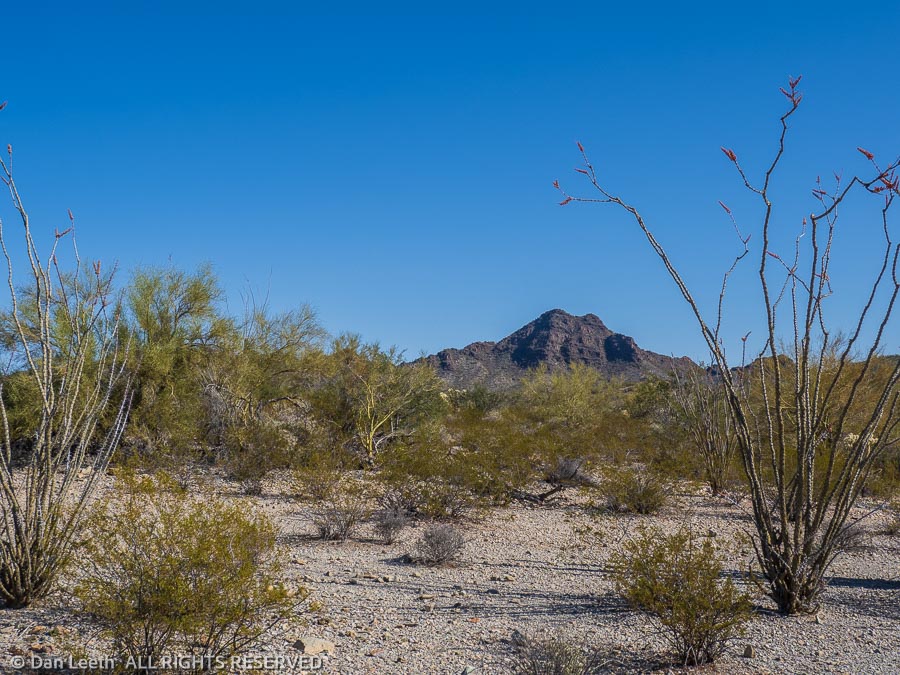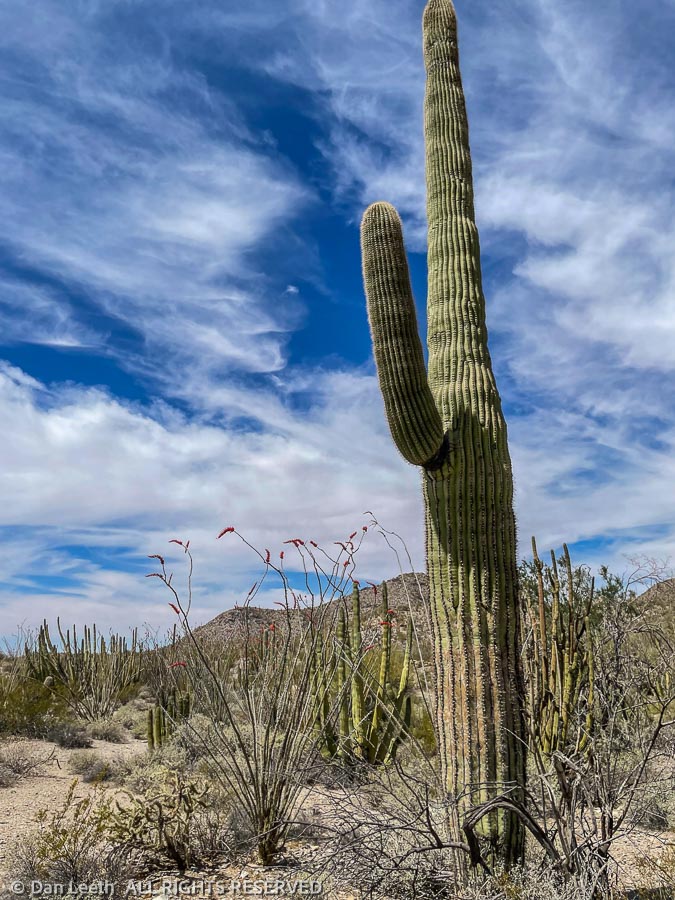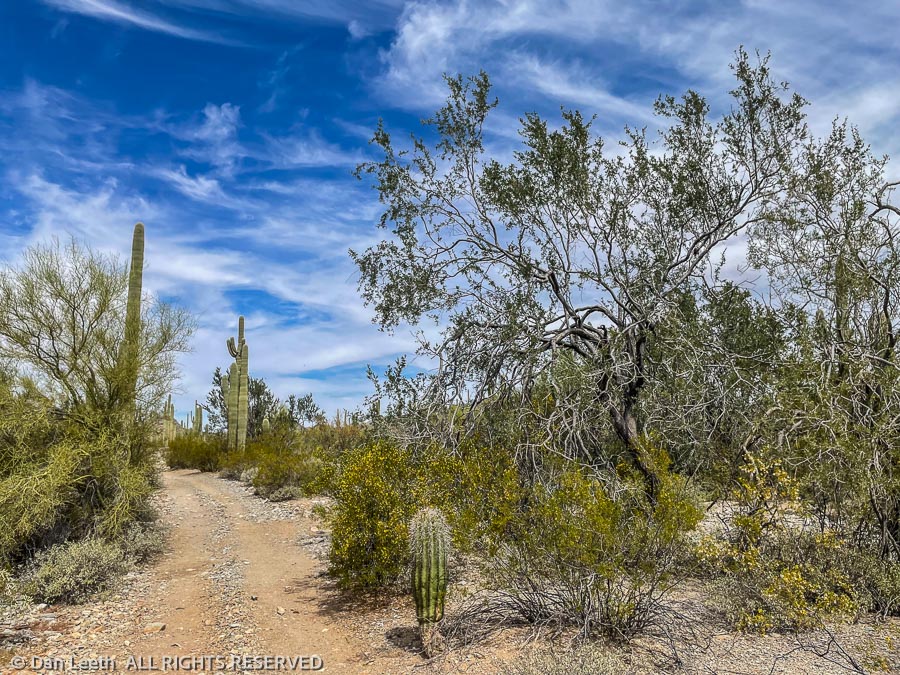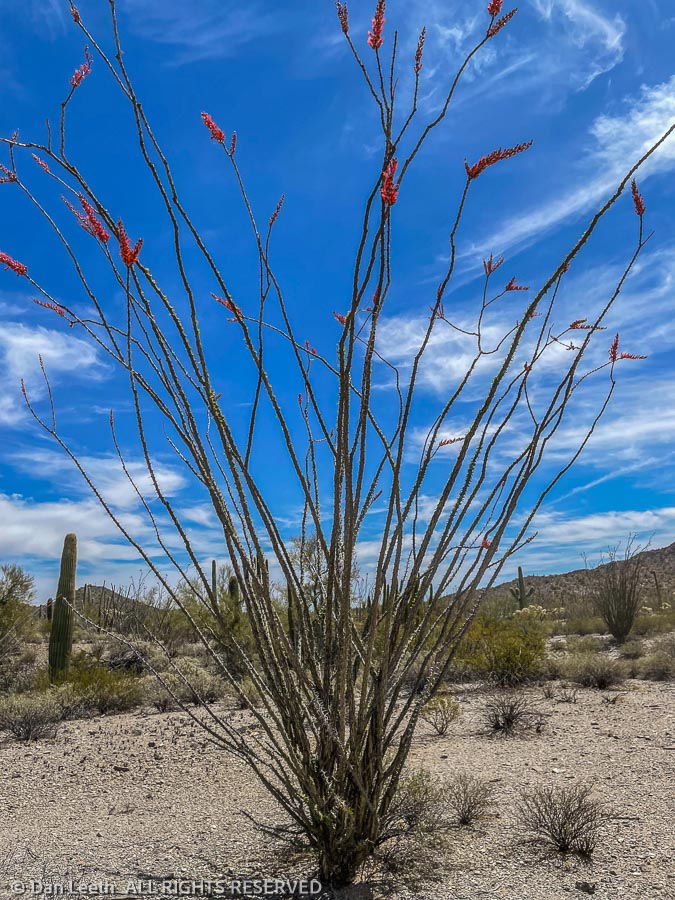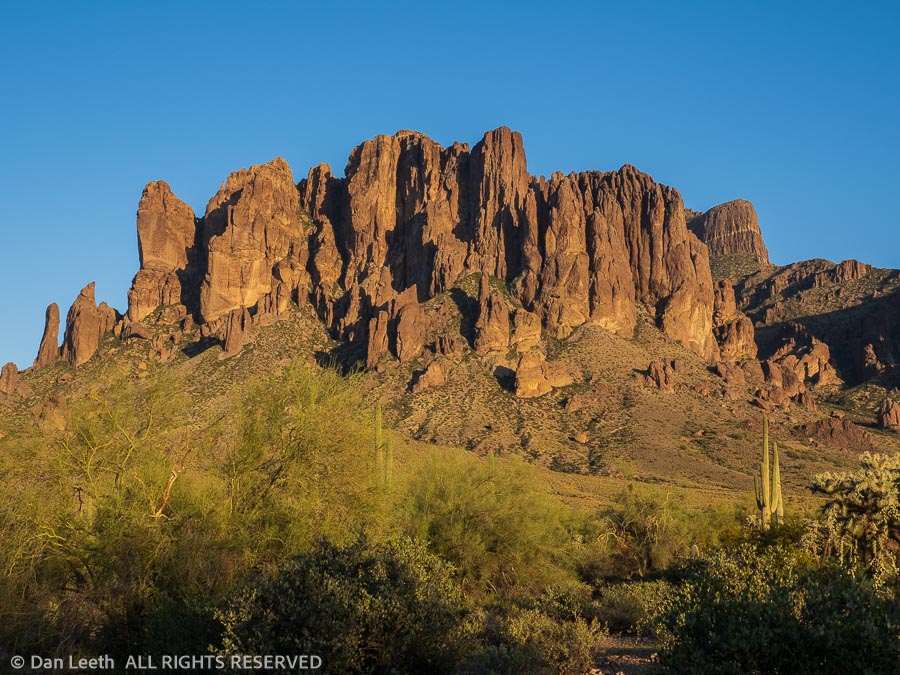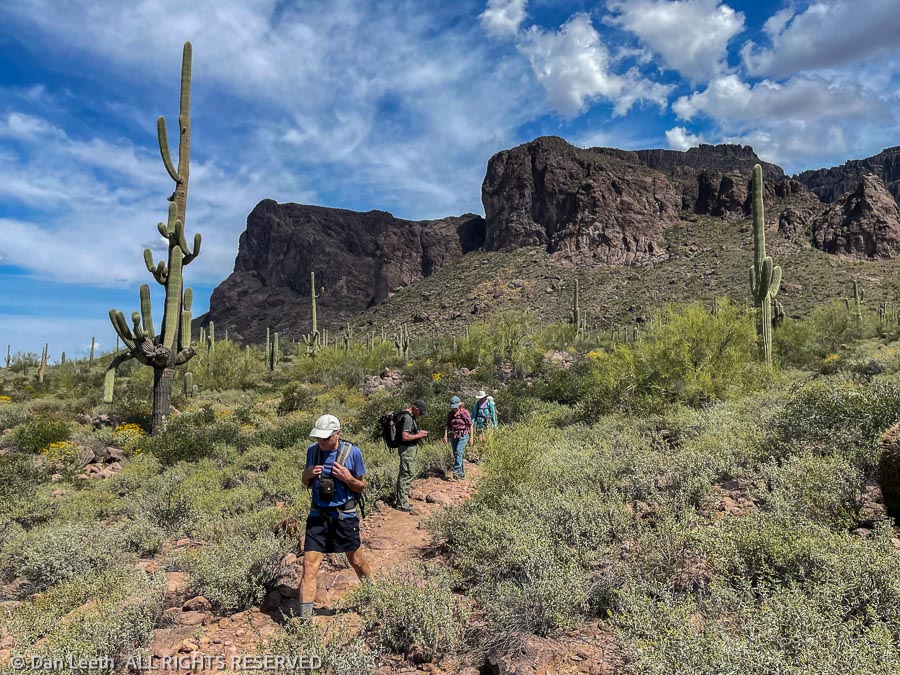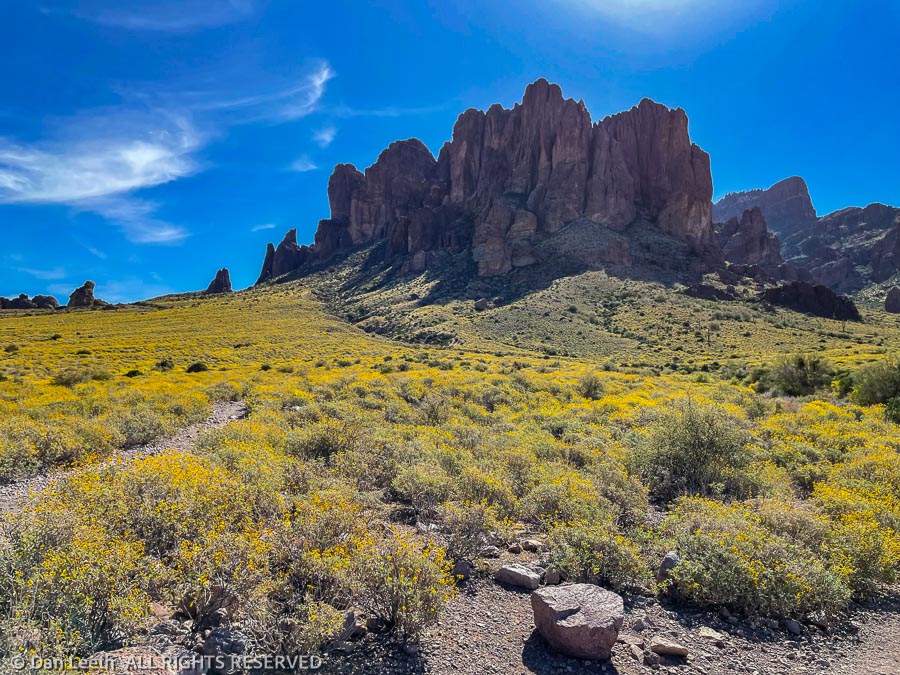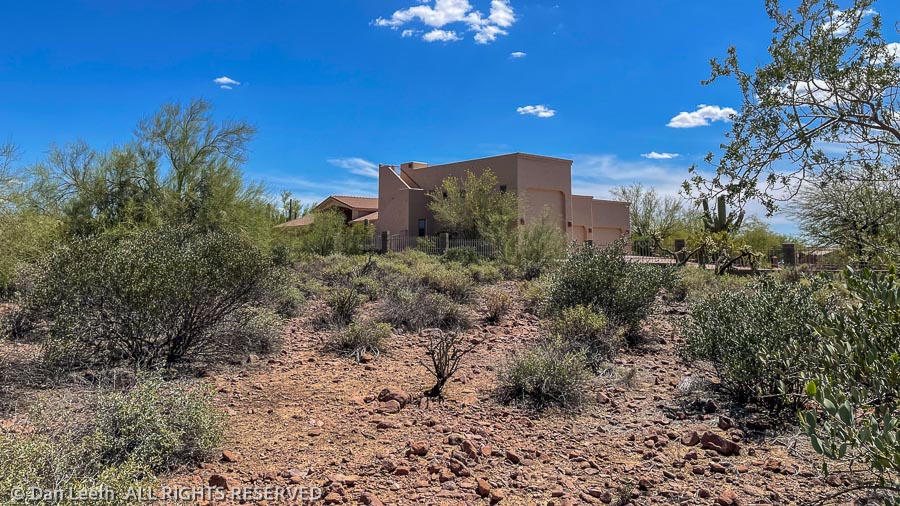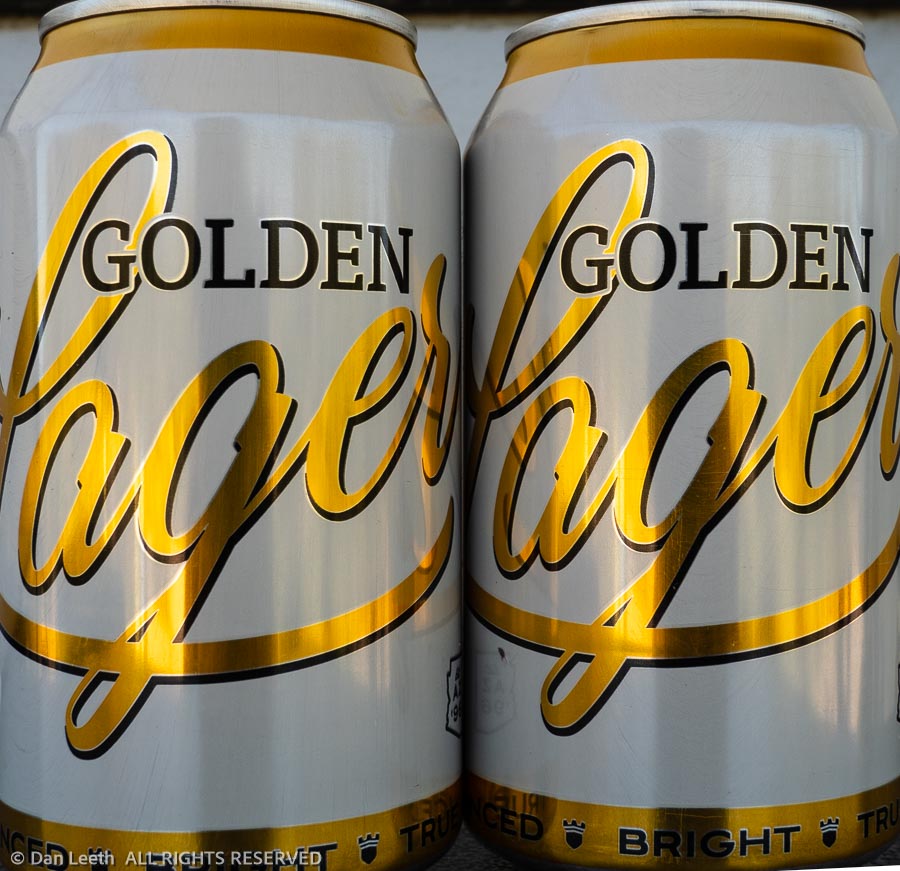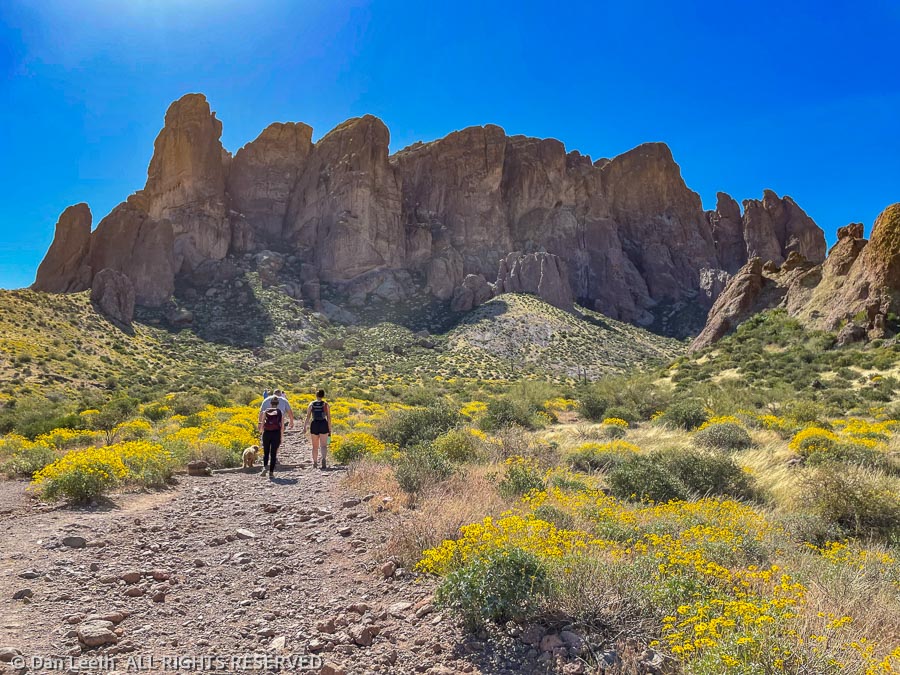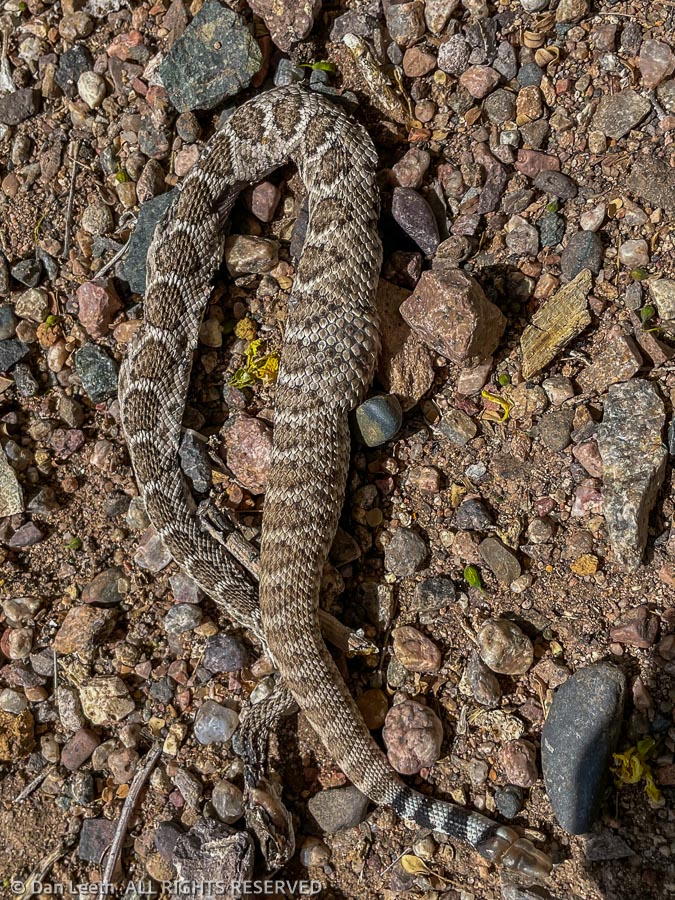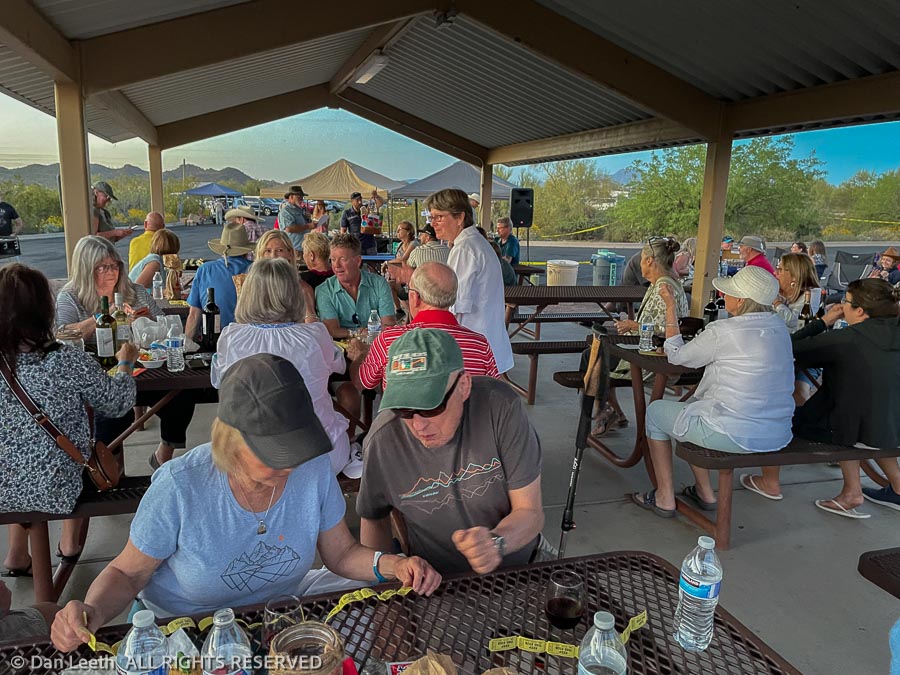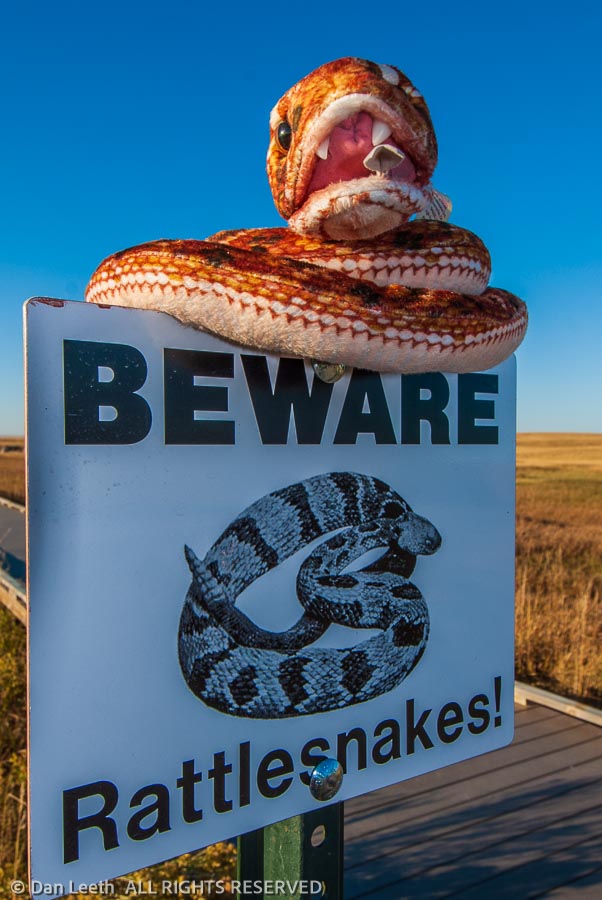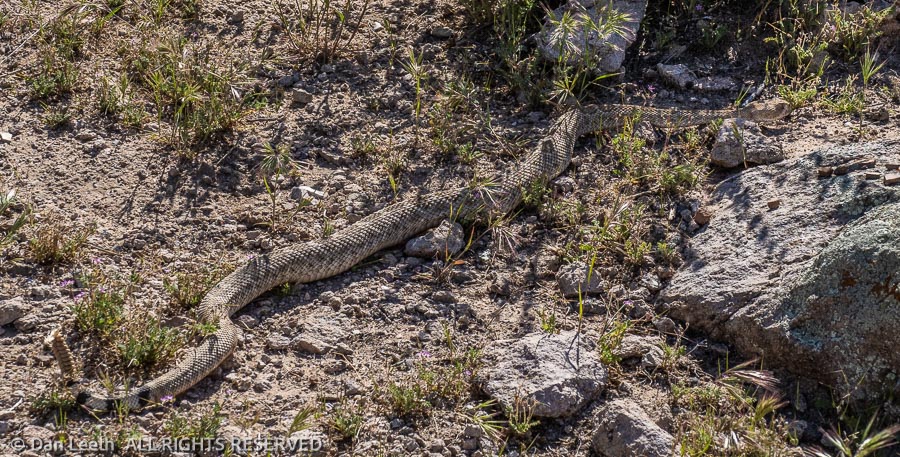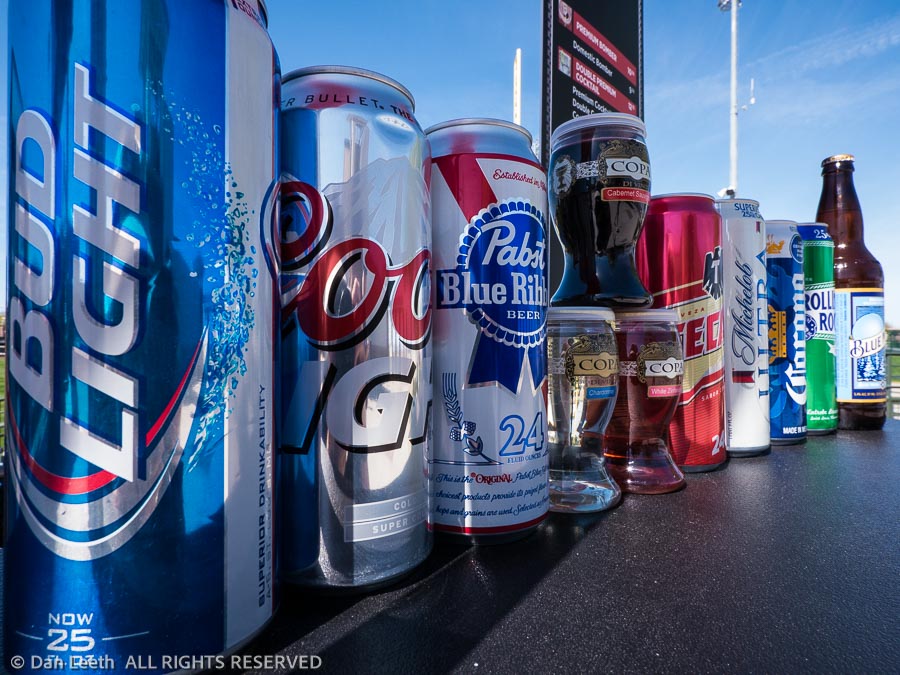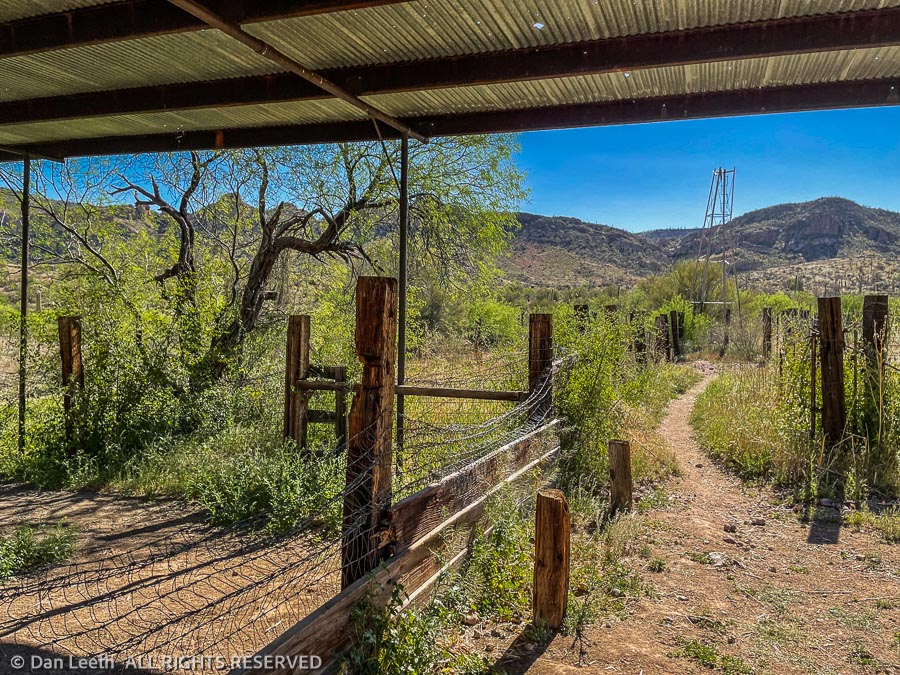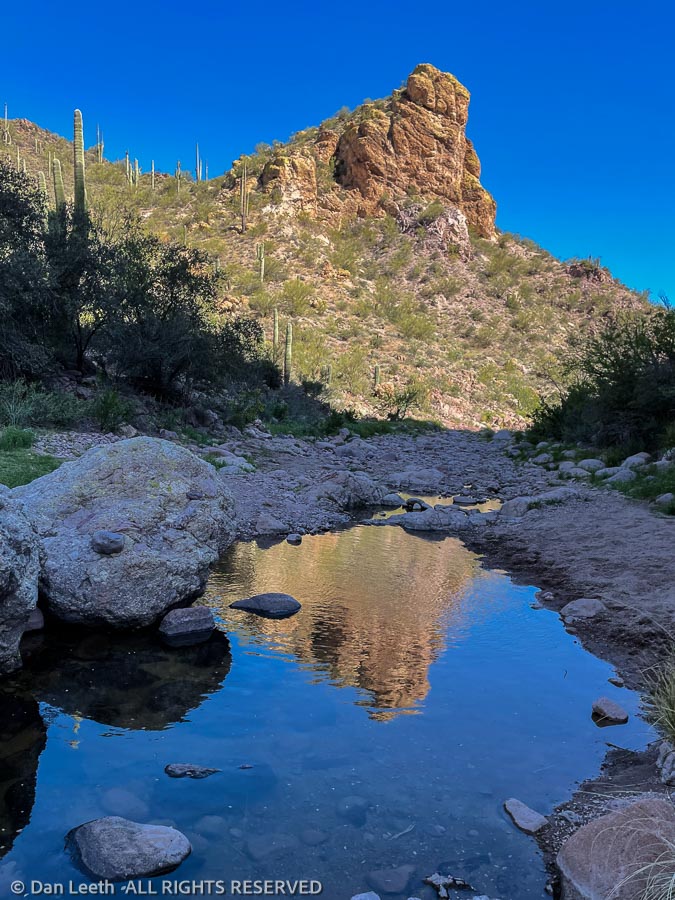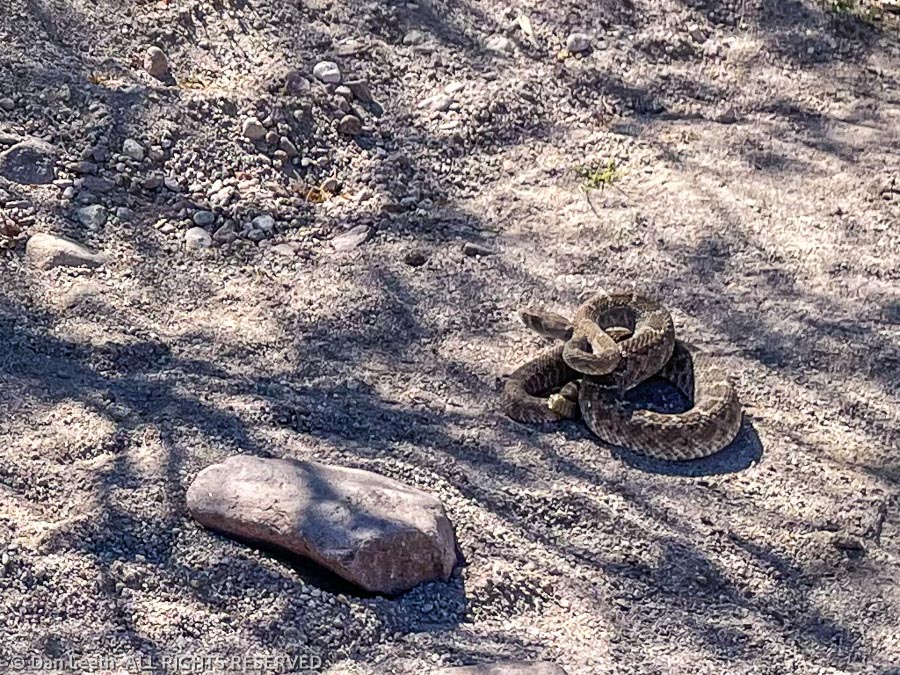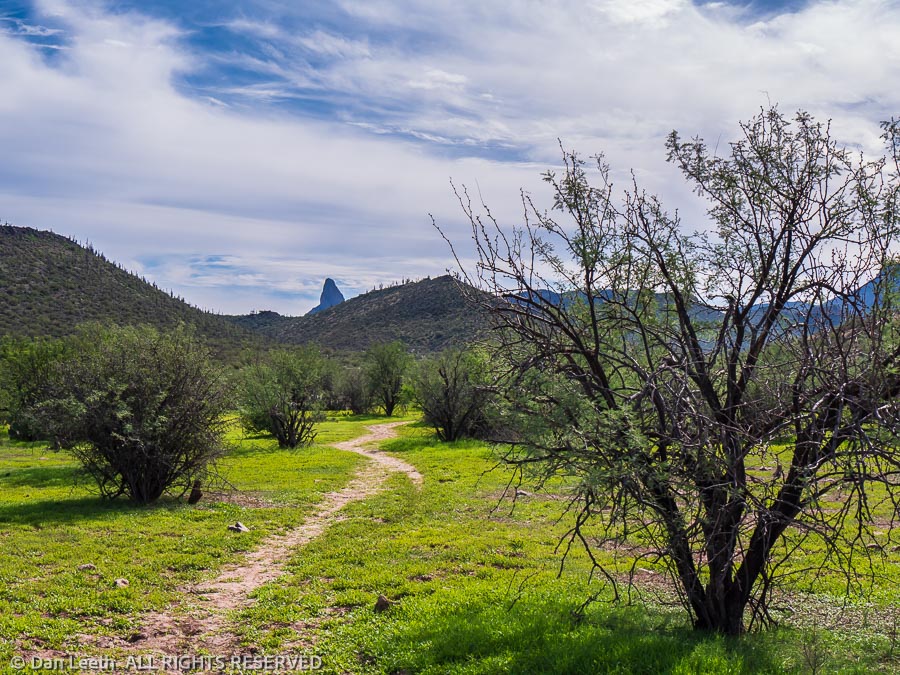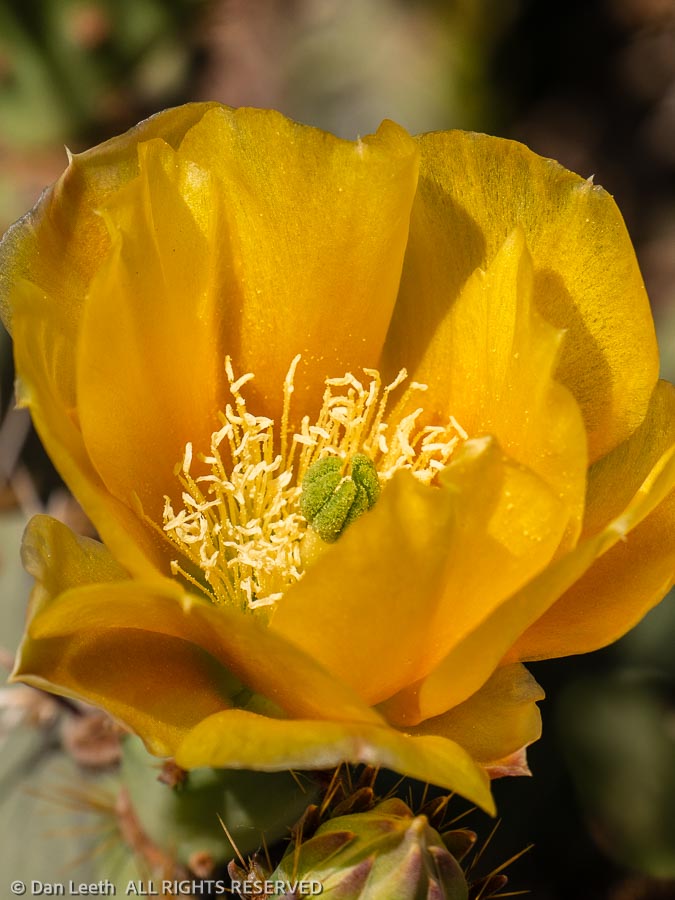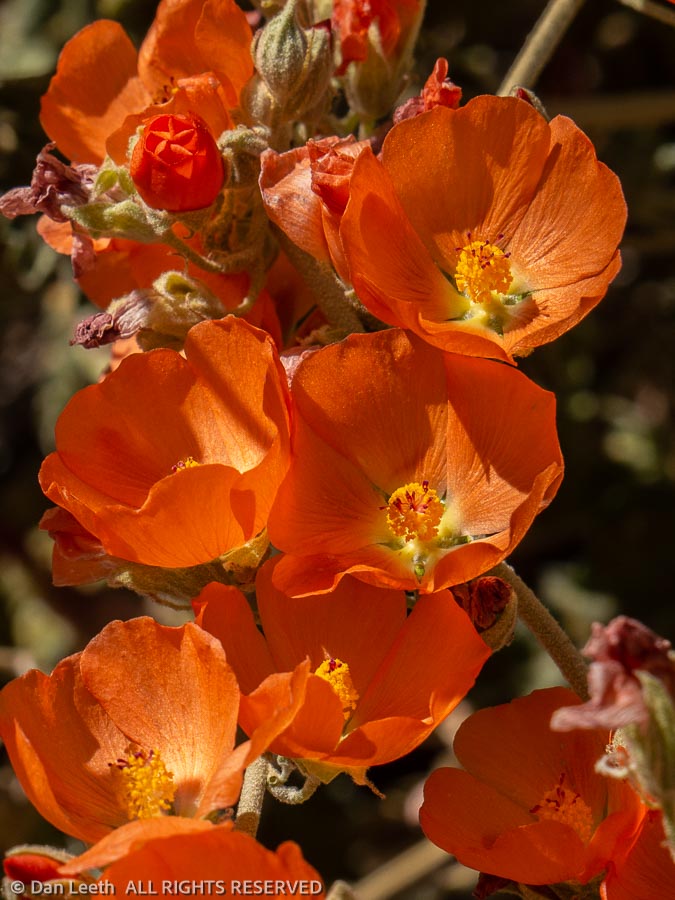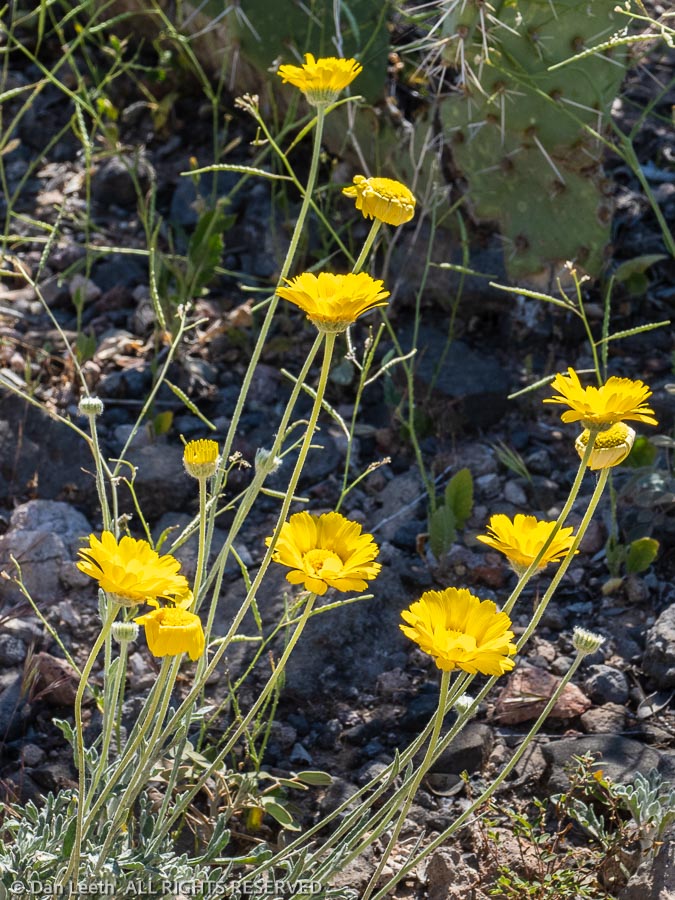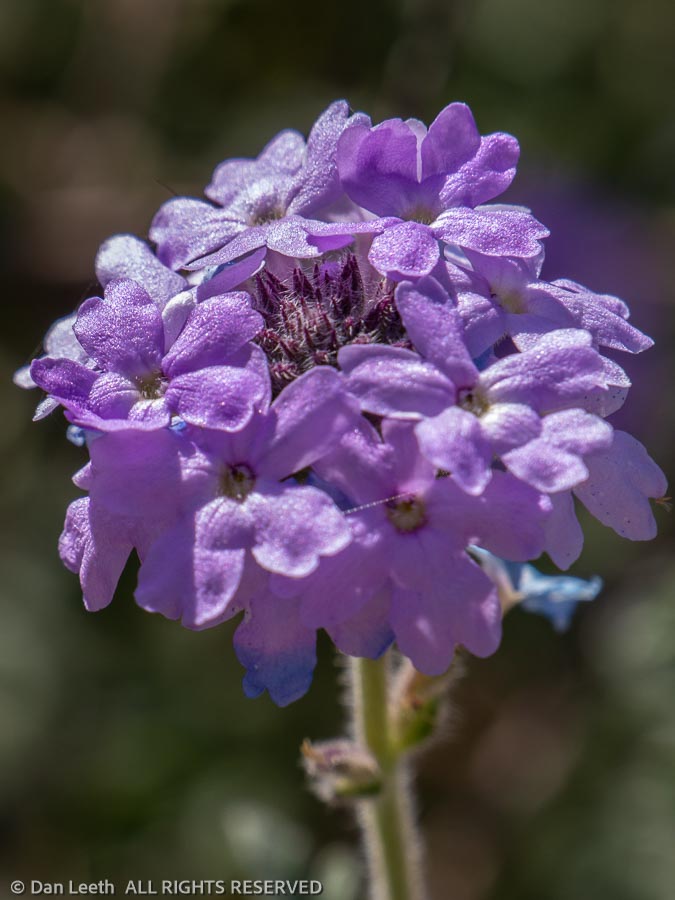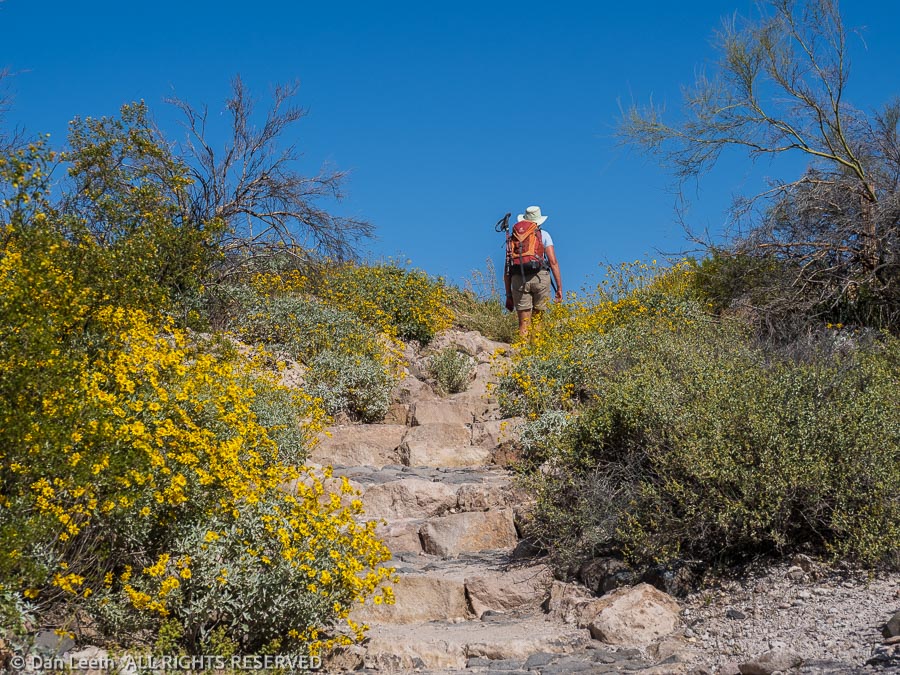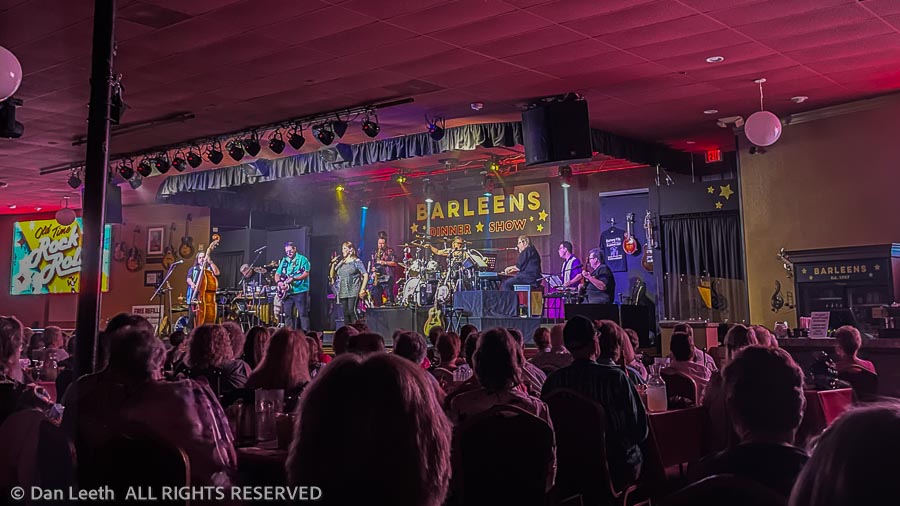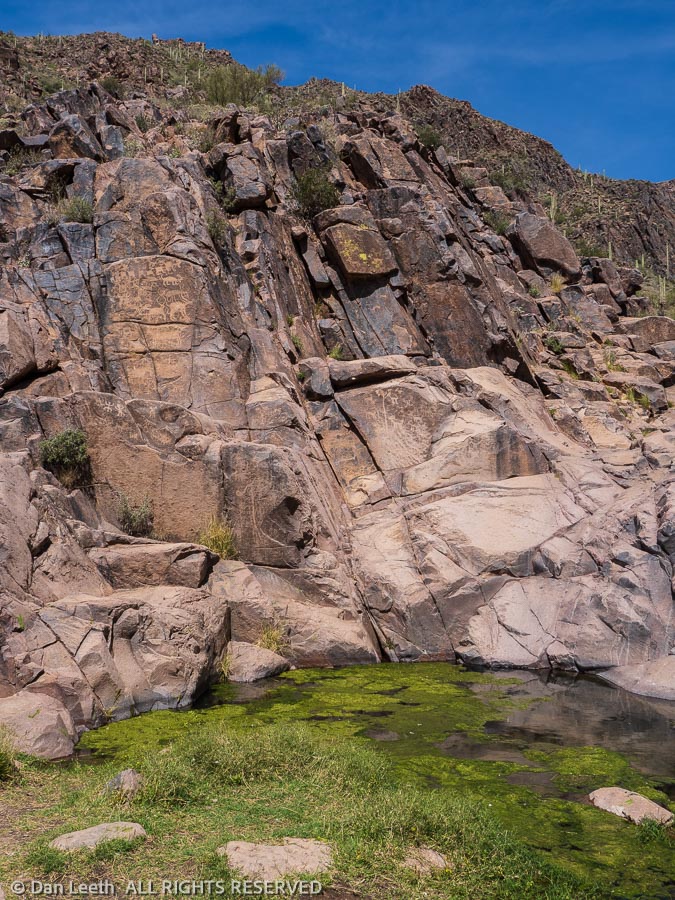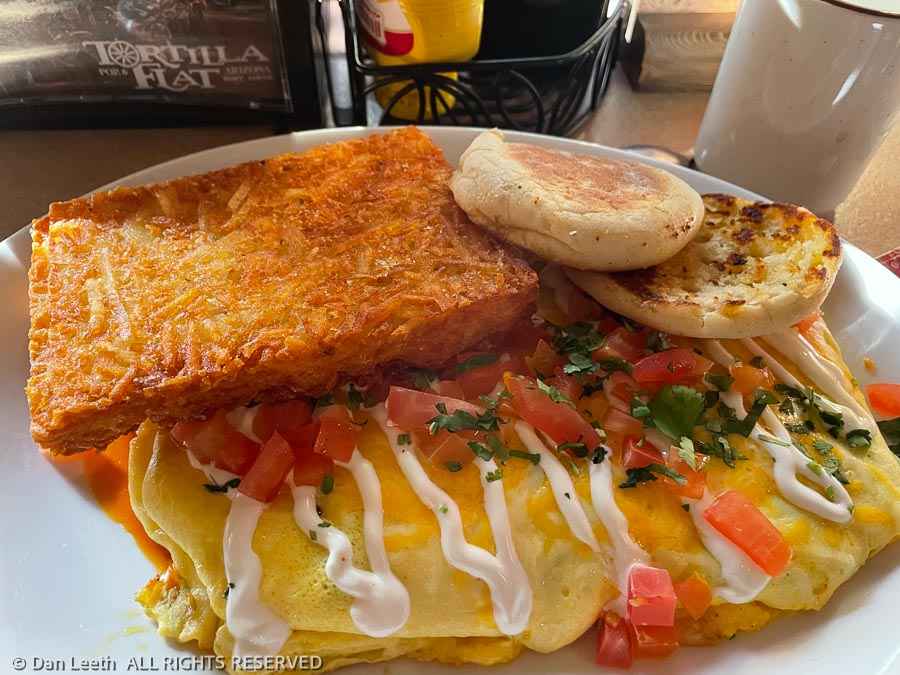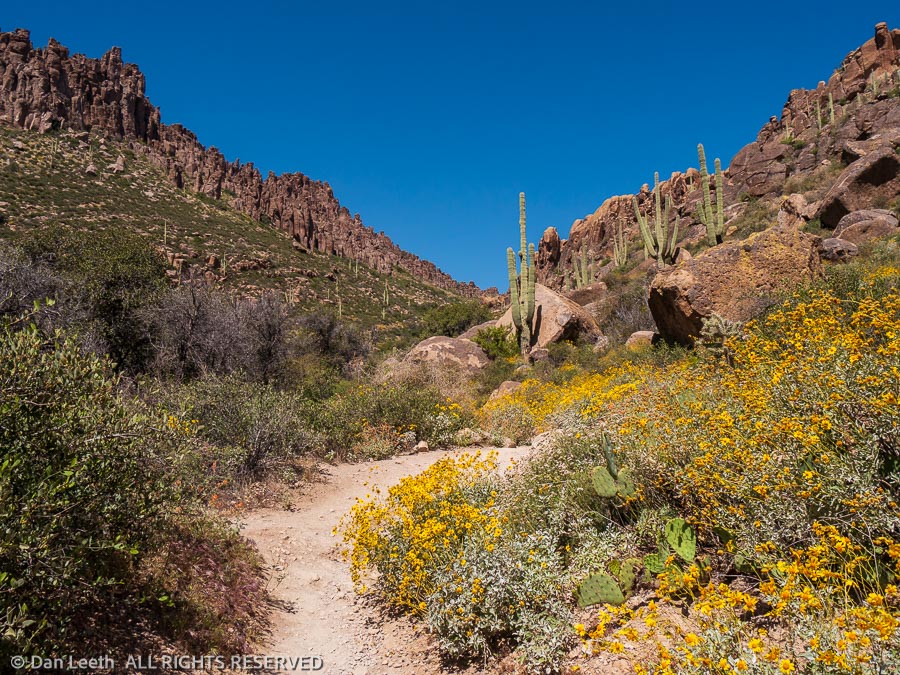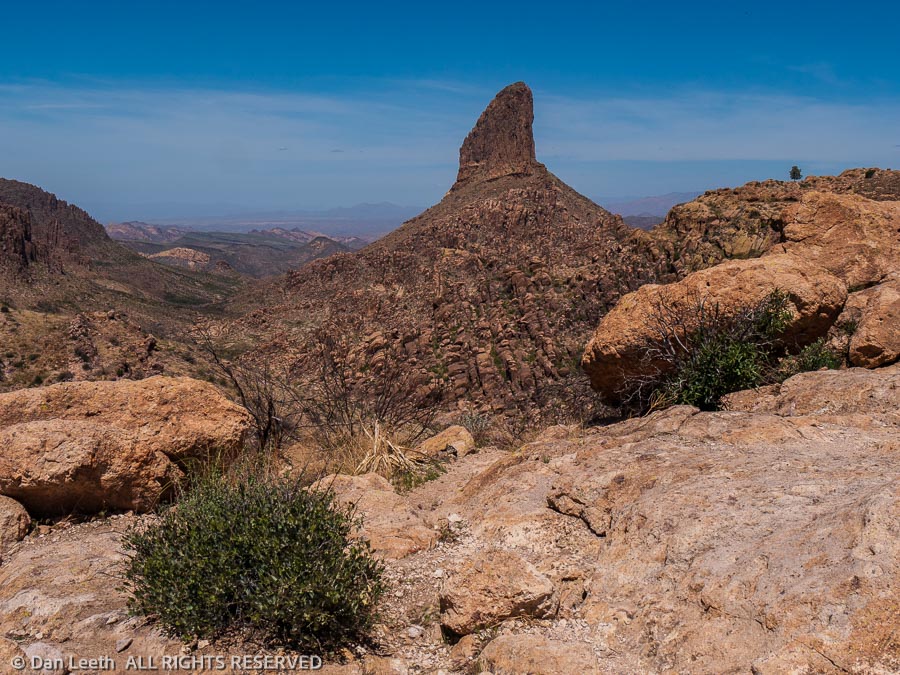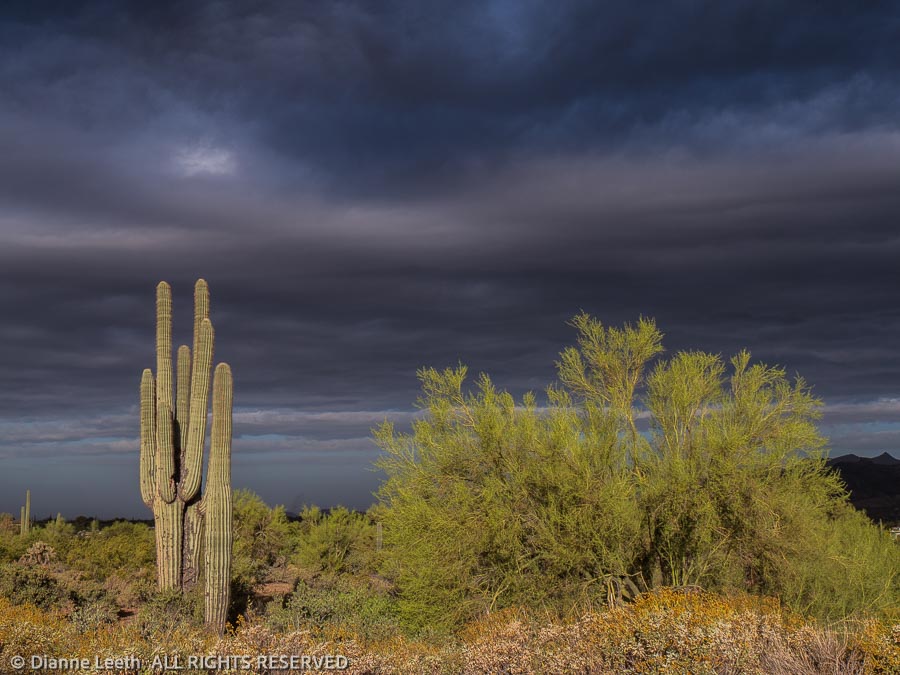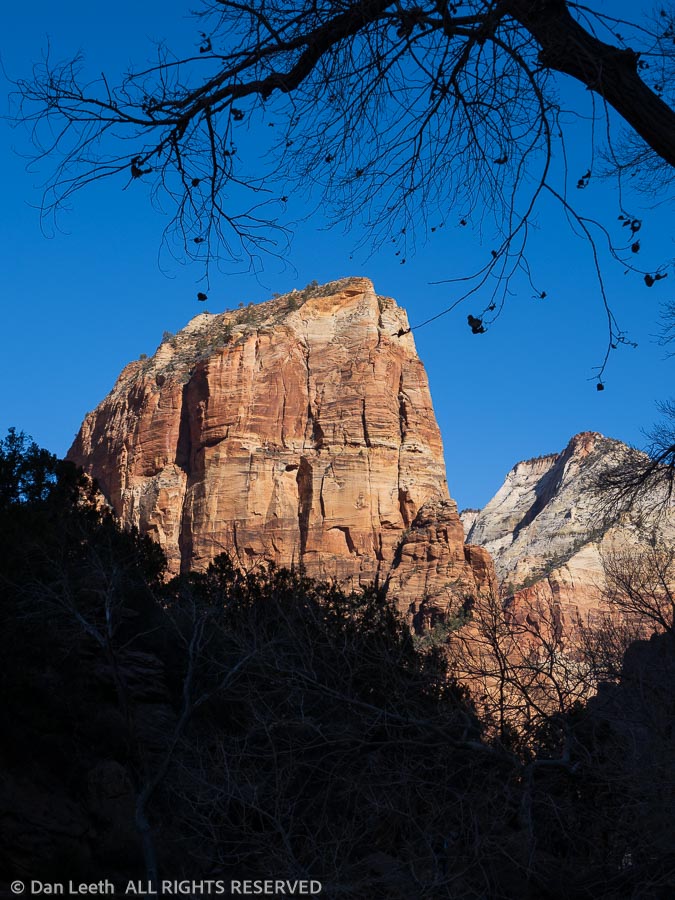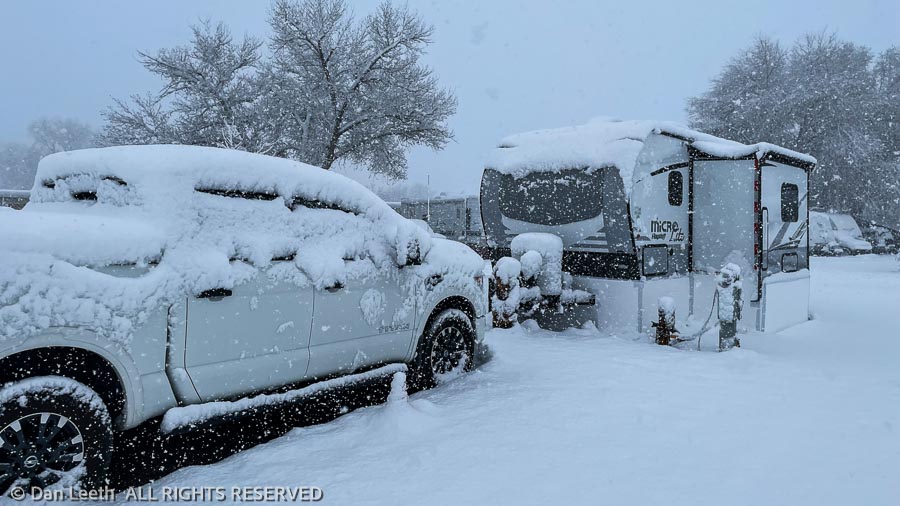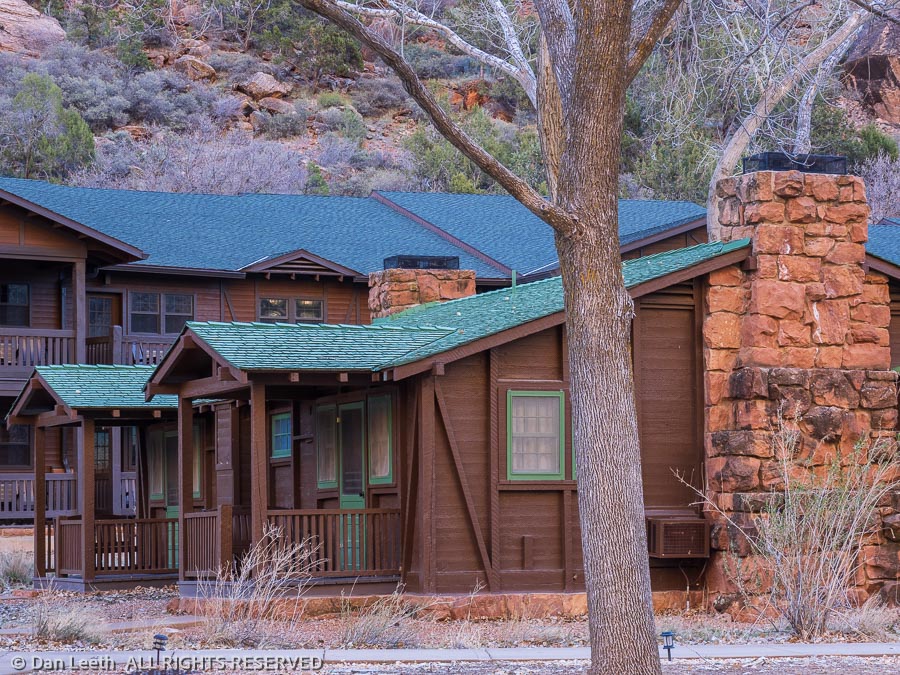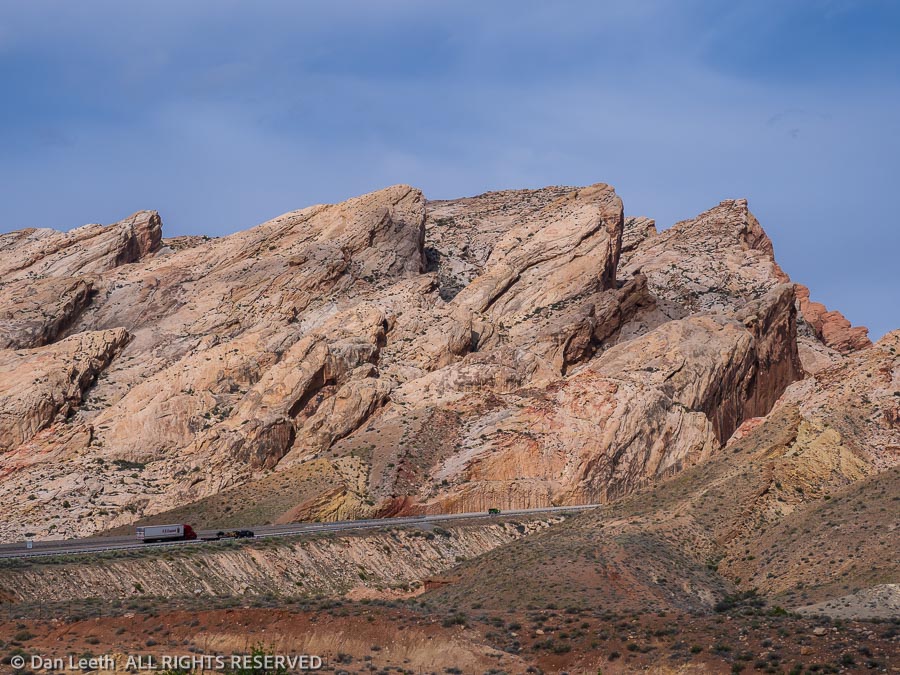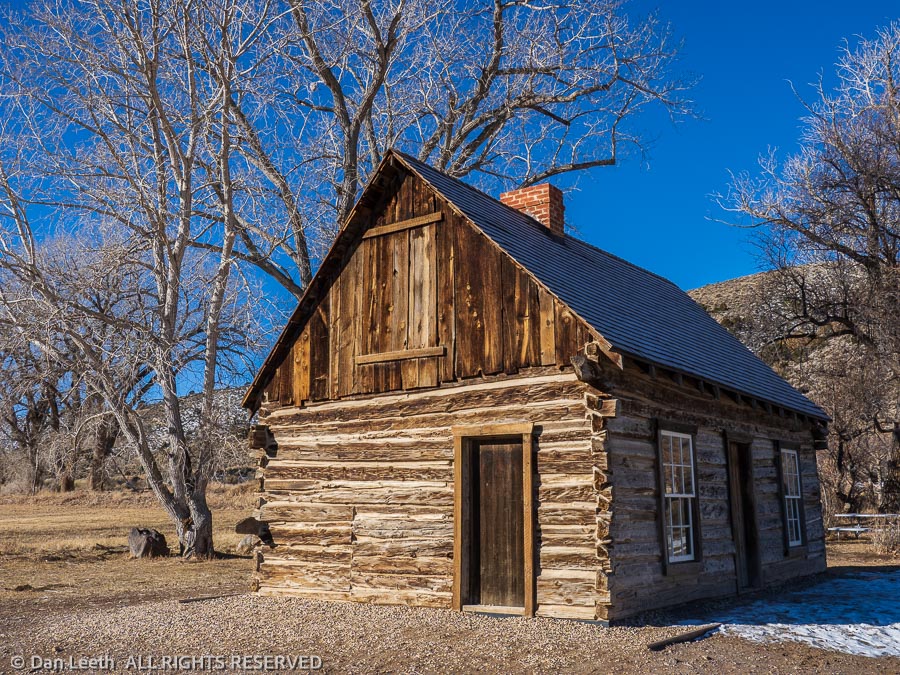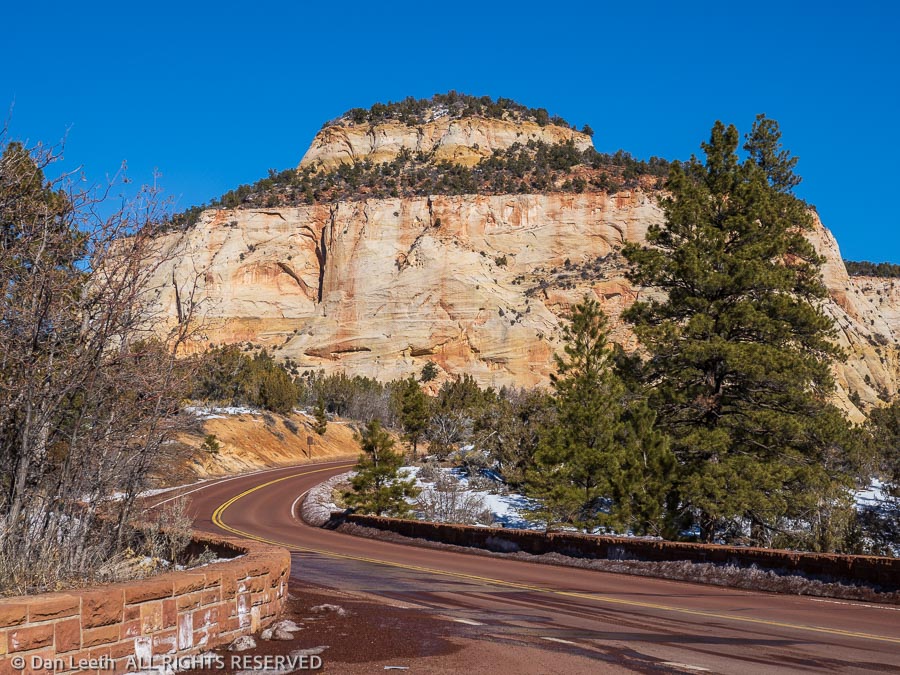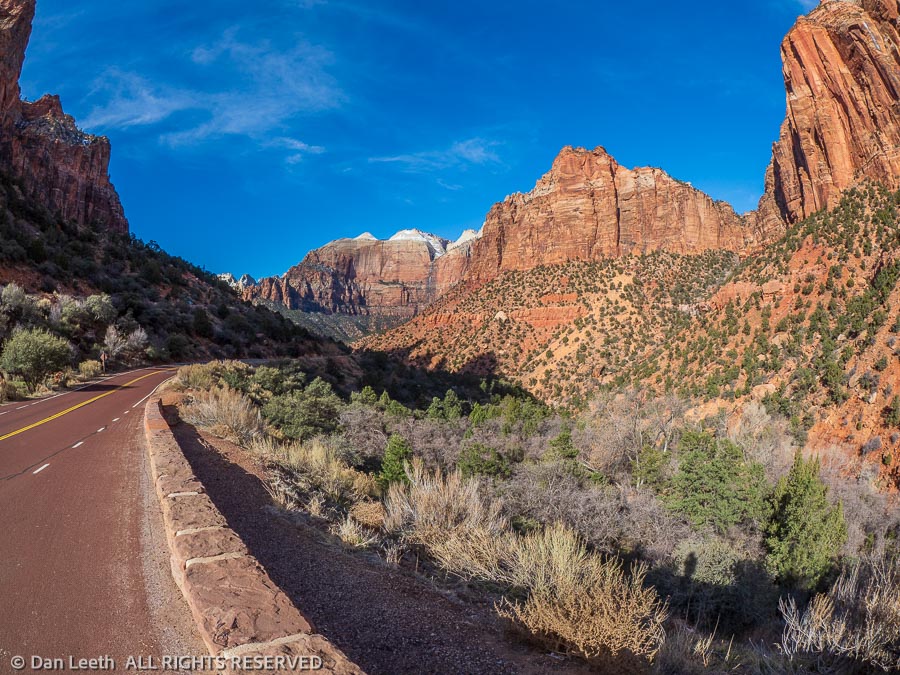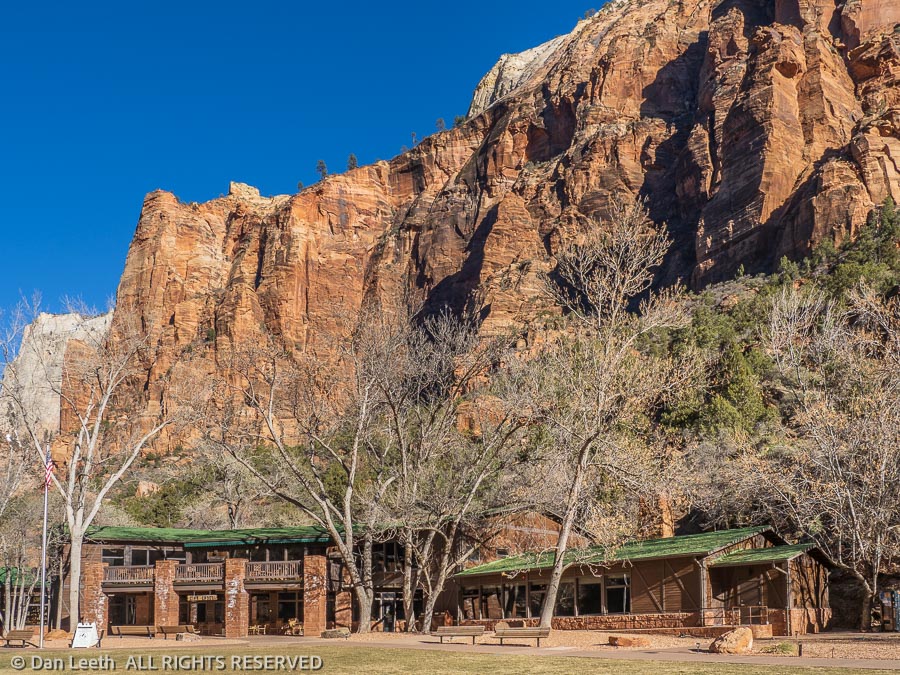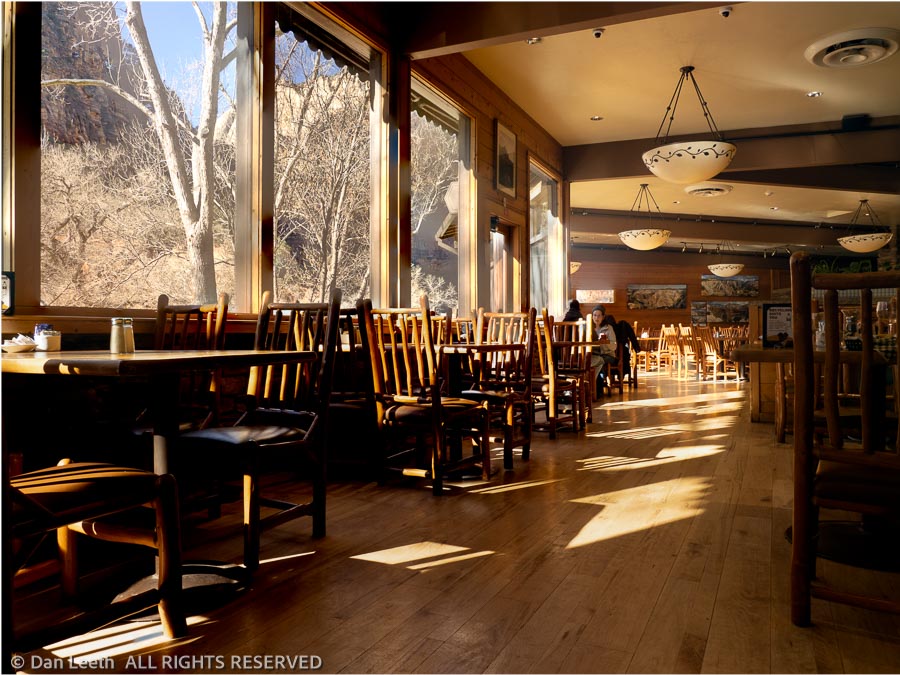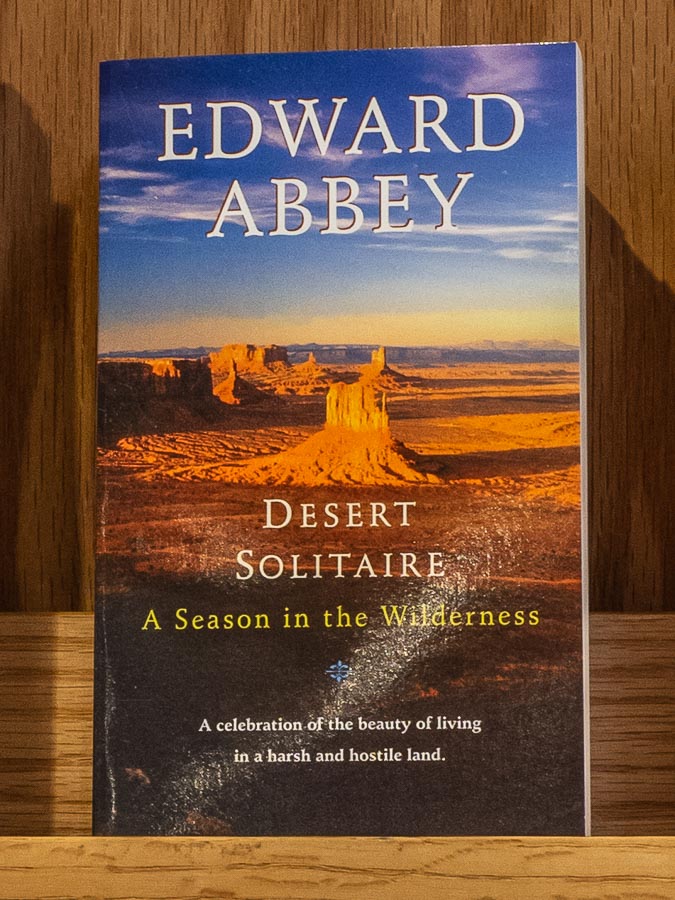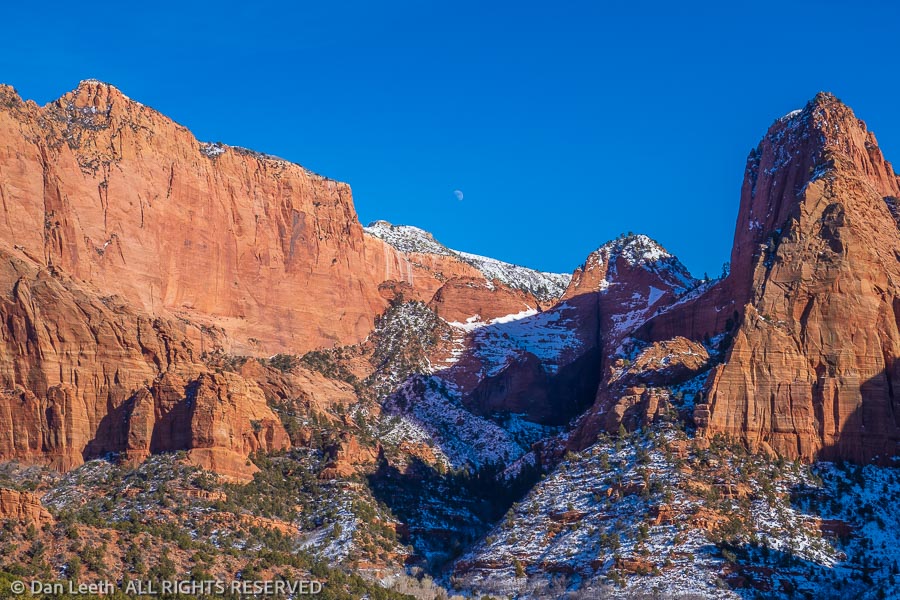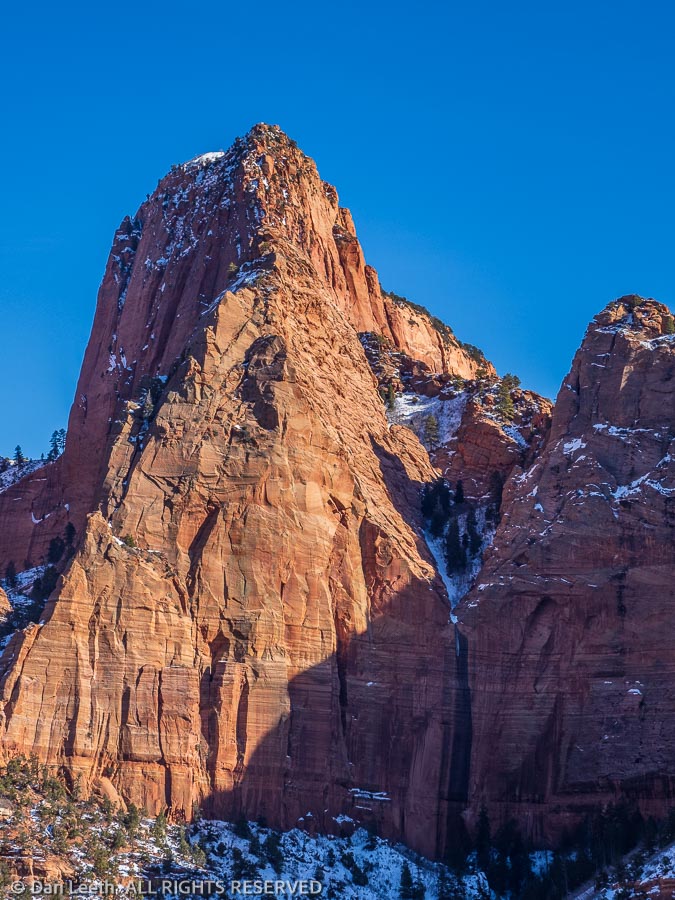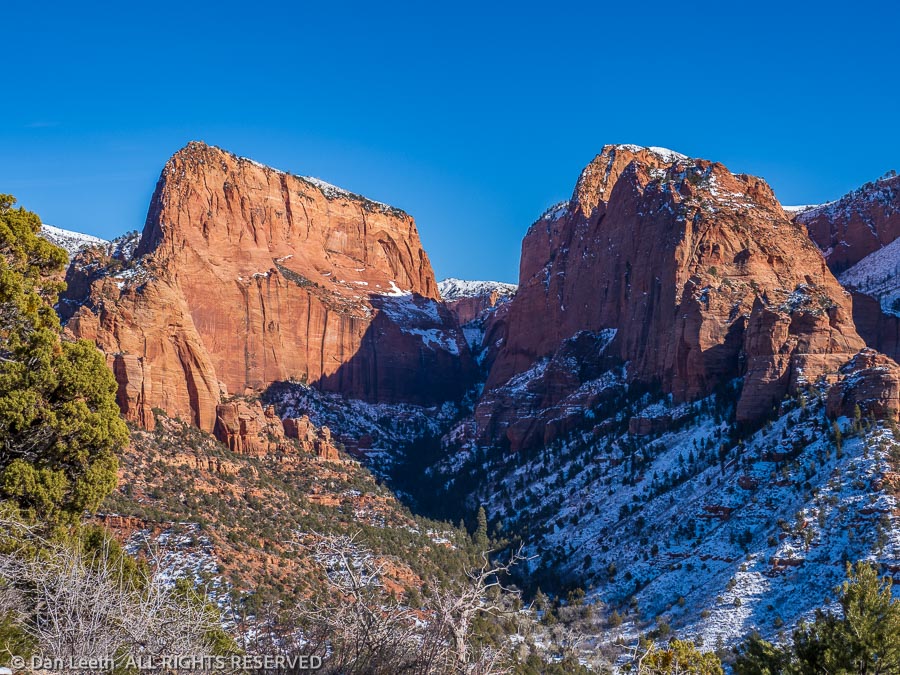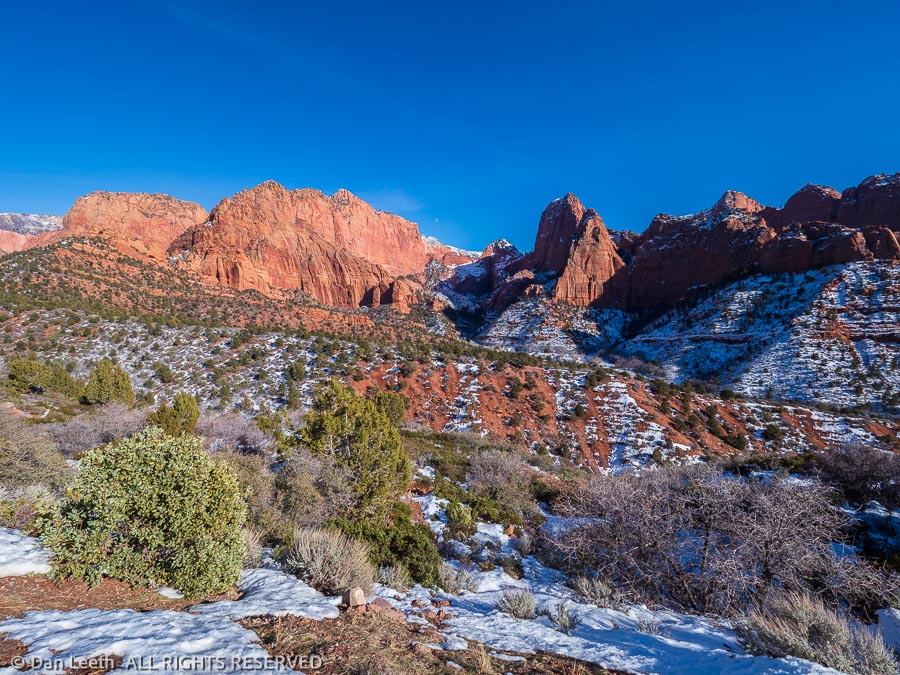Arizona state law requires that every tourist visiting the desert must post at least one photo of a saguaro silhouetted in the sunset. Here’s mine.
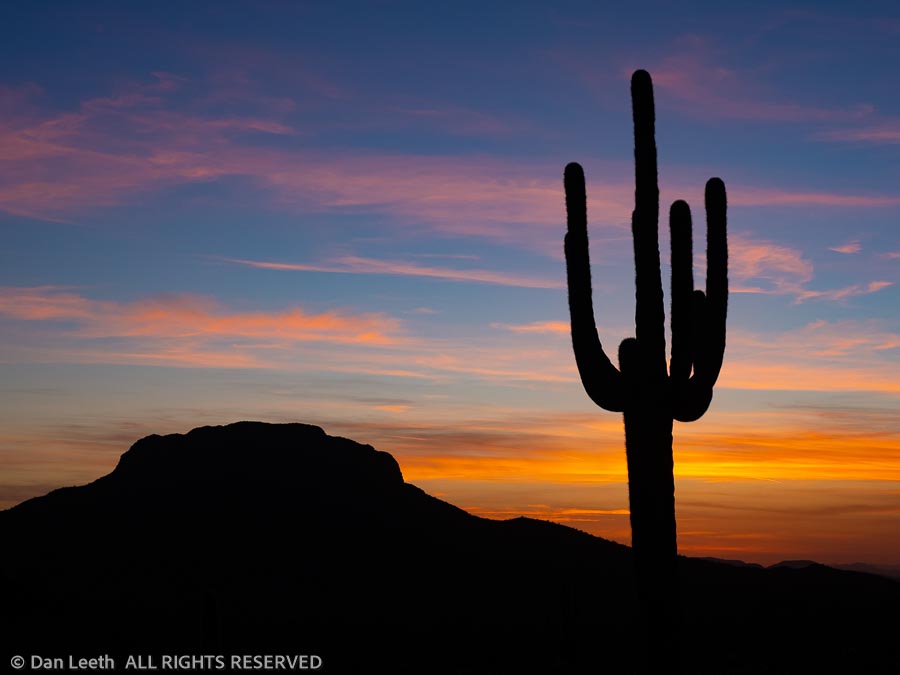
I suspect for most people, Organ Pipe Cactus National Monument is a one-and-done sort of place – stop at the visitor center, drive the Ajo Mountain loop, admire the wall and scurry back to civilization. We have two full weeks down here and have not run out of things to do.
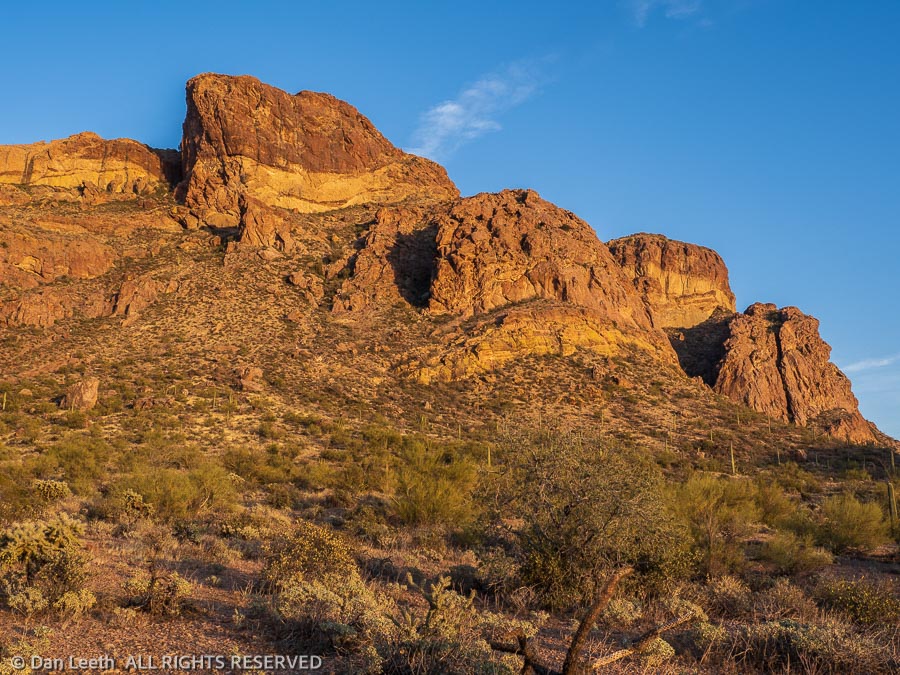
On Monday, we drove into the big city of Ajo. One of the park rangers here at the monument wore some earrings Dianne liked and was told they were available at a shop in the Ajo plaza. We also needed some groceries and were in need of a good burrito and margarita for lunch. Unfortunately, the earring shop and most everything else in town was closed on Monday, but we did get groceries, a burger and quite possibly the second worse margarita I’ve ever endured.
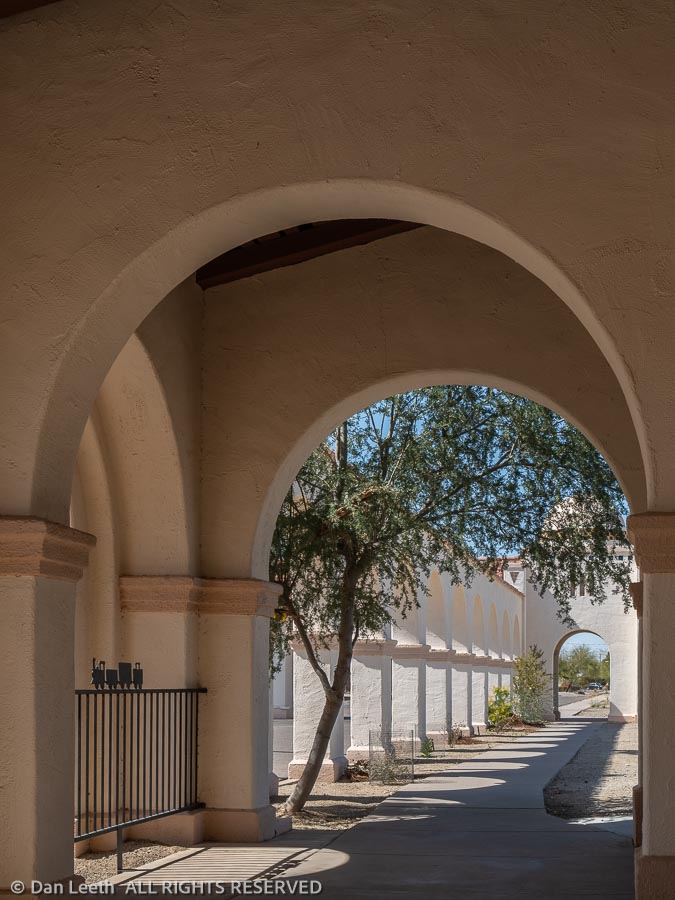
On Tuesday, we did an 11-mile hike that took us to the Red Tanks Tinaja, a natural depression in the rock that catches and holds rainwater. It was dry.
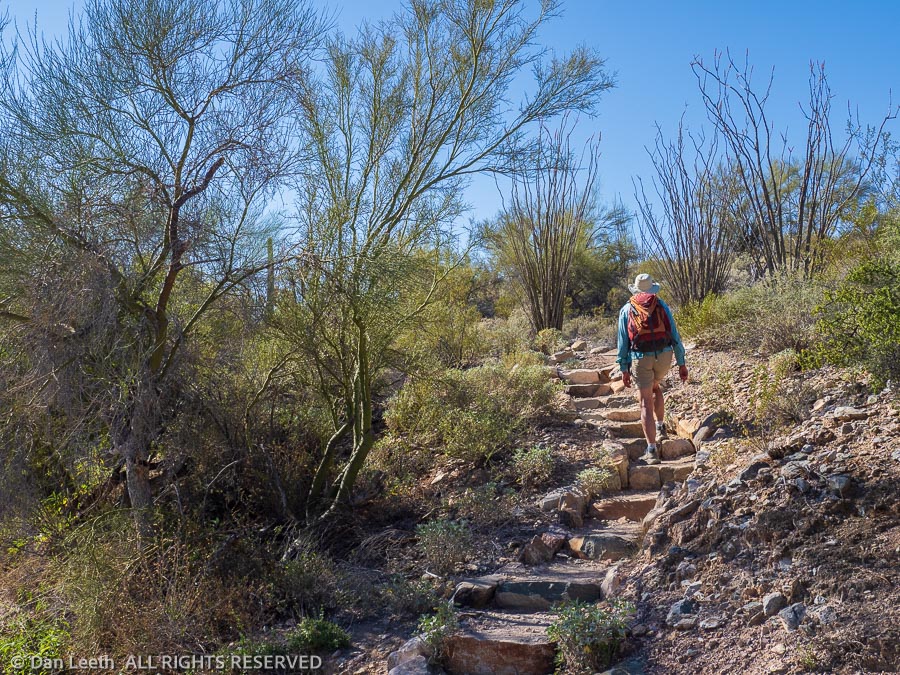
From there, we hiked on to the Baker Mine, which was little more than mine tailings. Next stop was the Milton mine.
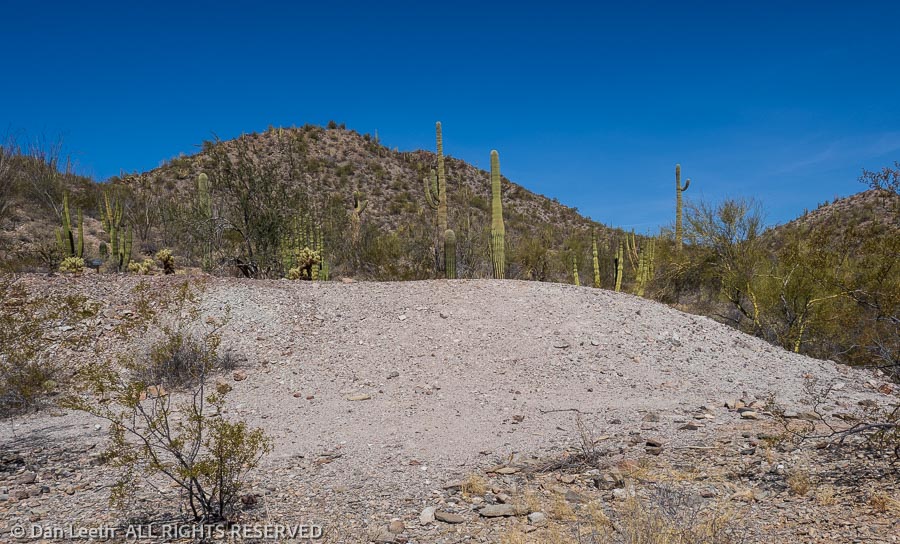
On our way to the Milton, we passed weathered piles of clothing left by folks who entered the country illegally, most likely drug smugglers. The residue included camouflage garb and shoe covers with carpet soles, which don’t leave tracks in the sand.

Nearby was one of the infamous black water bottles. They’re specifically made for folks crossing the border illegally, colored black so they won’t reflect light.
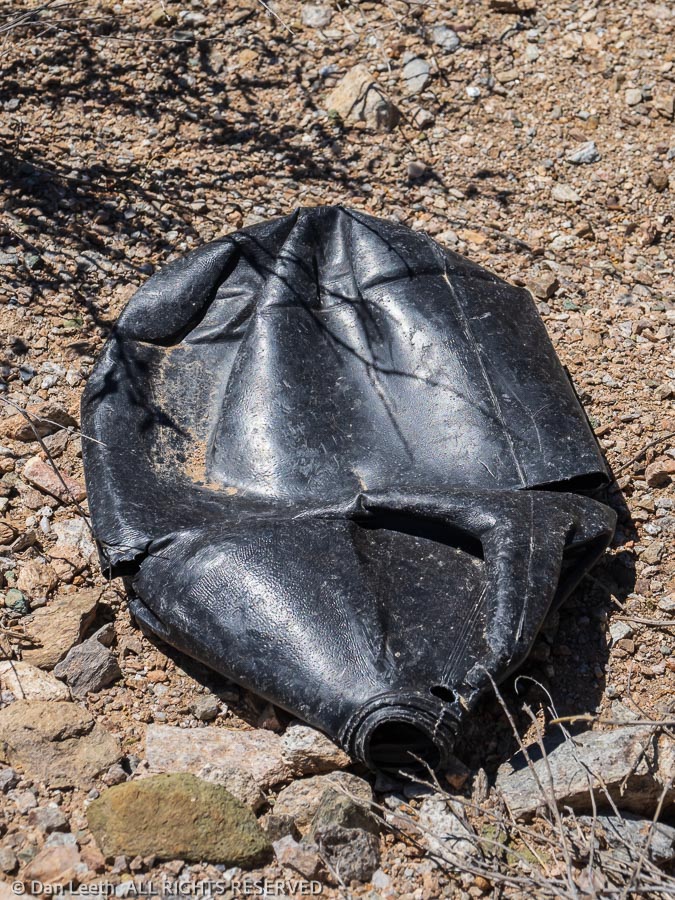
The Milton Mine was a more extensive operation with more to see and explore.
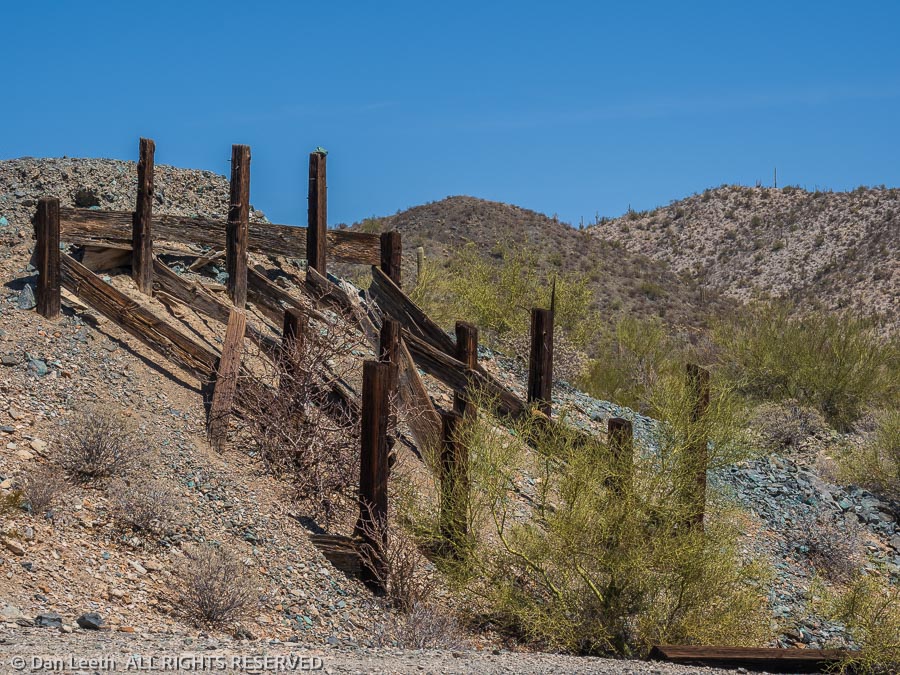
From there, we continued to Senita Basin, where we turned onto a trail that would take us back past the Red Tank Tinaja (still dry) and on to our truck., which waited beneath Pinkley Peak. On the entire loop, the only other person we encountered was a trail runner out doing his Coopers on the rough, rocky trail.

Wednesday was a flake-out day in camp. On Thursday, we did a little four-mile trail in the Ajo Mountains, which led up to a place called Bull Pasture, a thousand feet above the valley floor. Apparently some rancher used to bring his cattle up here to graze. I have no idea how he got them here, but it wasn’t by our route.
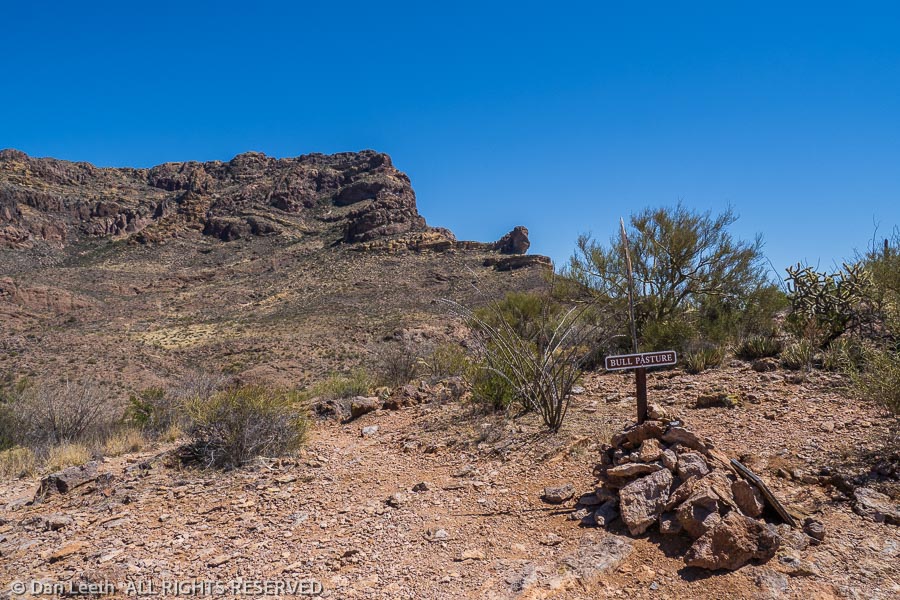
On Friday, we did a long drive up the Pozo Nuevo Road through the western side of the park. The first part of the route was marked as a 4×4 road. Instead of being a 4×4 road, it turned out to be a well graded route for its entire 14-mile distance. It was smoother than I-70 through Colorado.
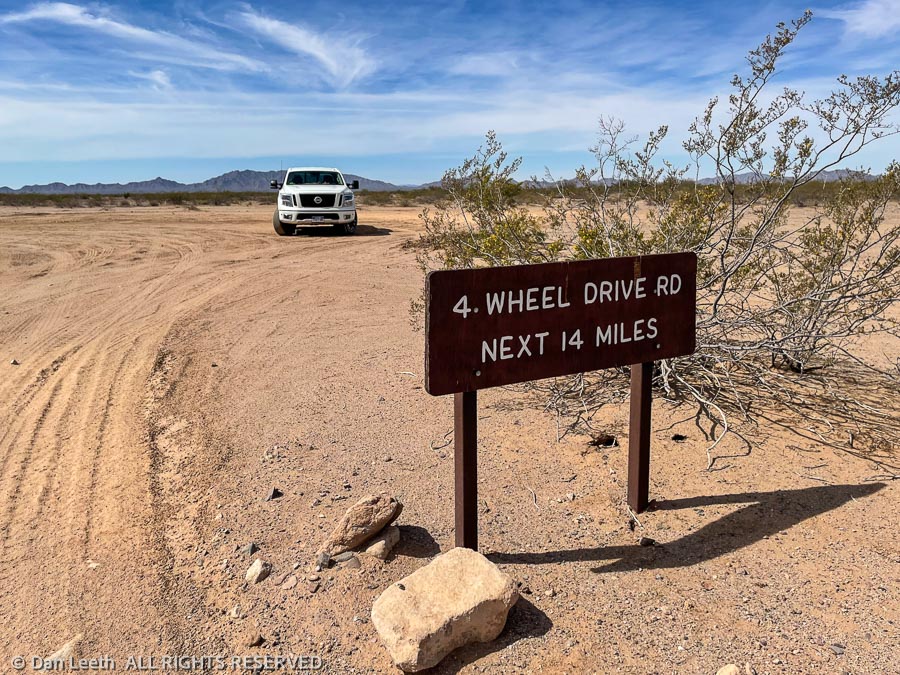
We stopped to explore the Pozo Nuevo line camp along the way. Here stood the remains of a windmill and corral with various pieces of rusting equipment and furnishings lying about.

The Pozo Nuevo road T-bones into a road with two names – the Bates Well Road or El Camino del Diablo (the Road of the Devil). We turned and headed west, following this Highway to Hell up to the park boundary and the start of the Cabeza Prieta National Wildlife Refuge.
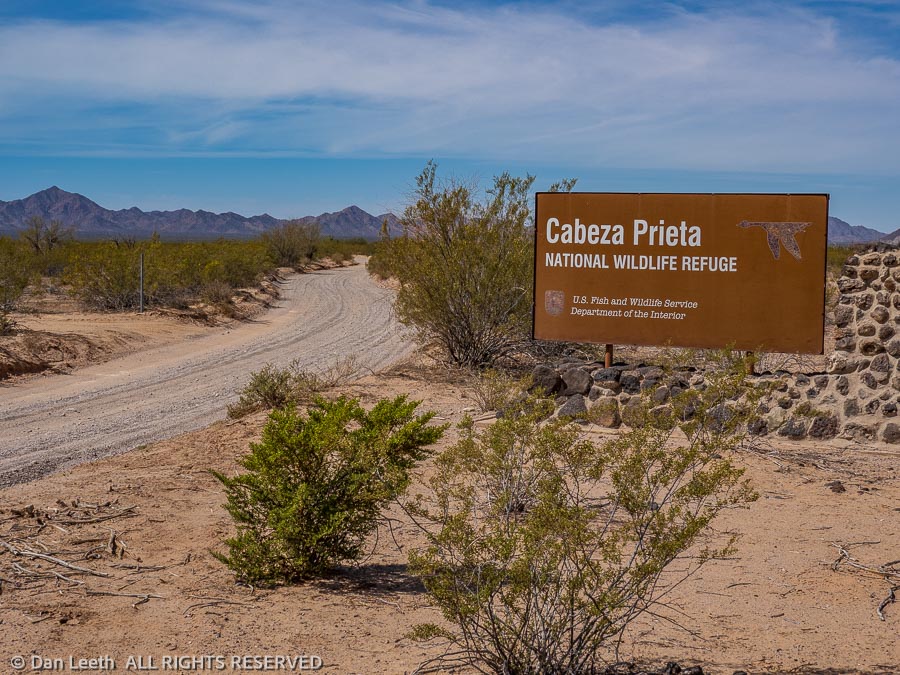
El Camino del Diablo continues as a true 4×4 route through the desert, crossing the wildlife refuge and proceeding on to Yuma. I’d love to drive the entire Camino del Diablo sometime after we get the Bronco.
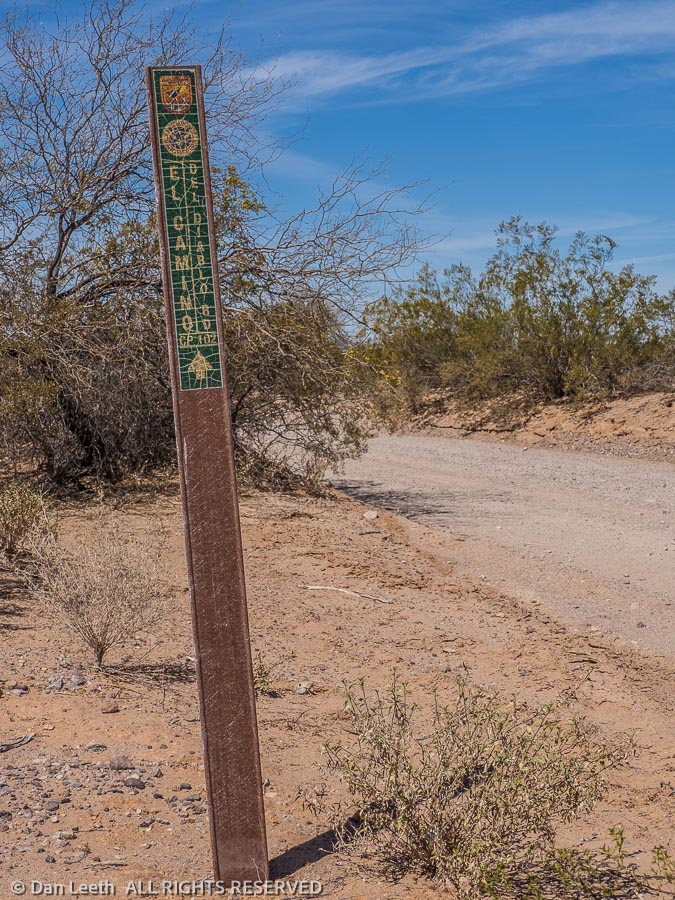
At the border of the monument and refuge sprawls a Border Patrol facility surrounded by razor wire and no trespassing signs.
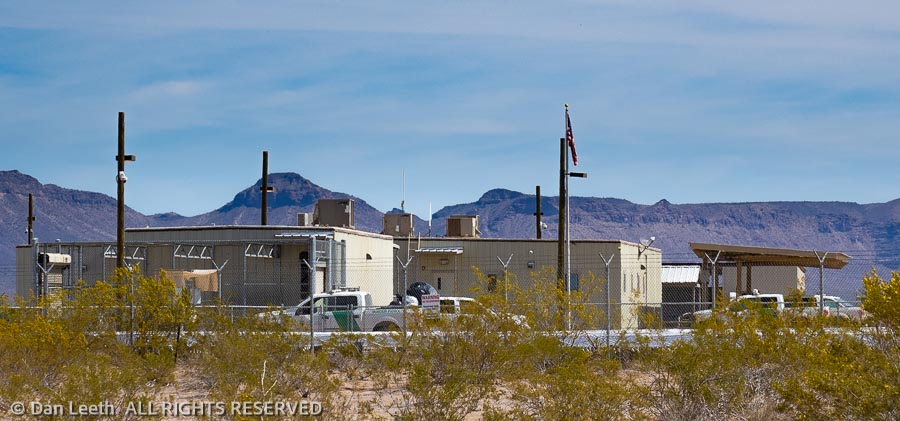
Across the street stands a huge surveillance and communications tower complete with cameras. No doubt, some agent got a great shot of me relieving myself on a creosote bush. Returning on the narrow road, we met an officer driving a Border Patrol van. While he did not appear happy to see us out there, he did not cite me for unlawfully watering the vegetation.

Heading east across the monument, we soon reached the Bates Well. The Gray family lived here at the time the monument was created in 1937 and they were allowed to stay and run their ranch.
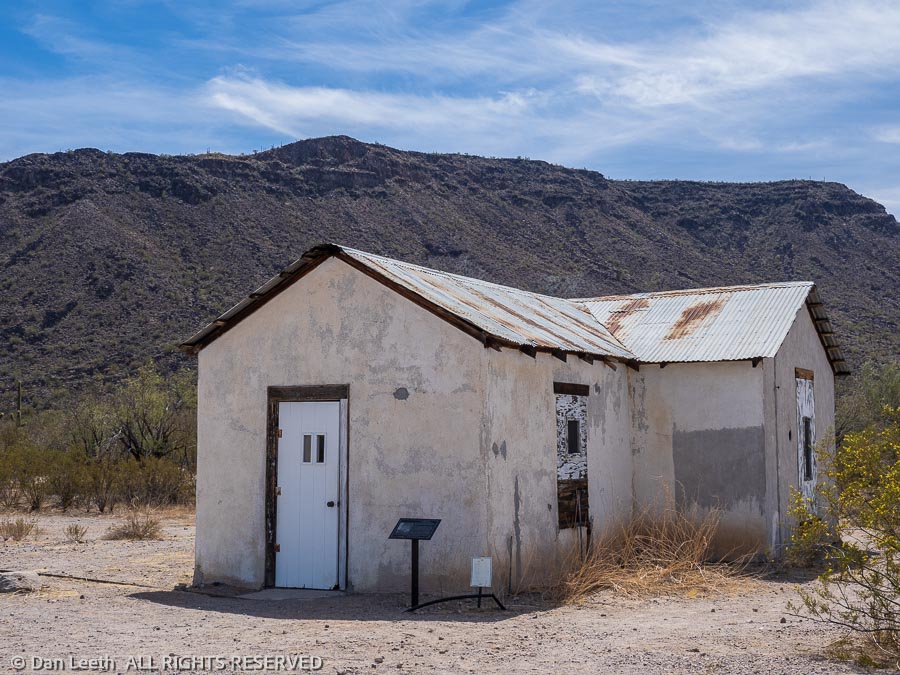
When Henry Gray, the last surviving member of the family died in 1976, the ranch was closed. The home, buildings, windmills and tanks remain.

Continuing past the tailings from the Ajo Mine, Arizona’s first open-pit copper mine, we headed into town. After burritos and brews at Tacos El Tarasco, Dianne went looking for her earrings. Unfortunately, the lady selling them had closed for the season and evacuated to the Phoenix area. While Dianne left with a full wallet, I found a nice T-shirt to buy.
